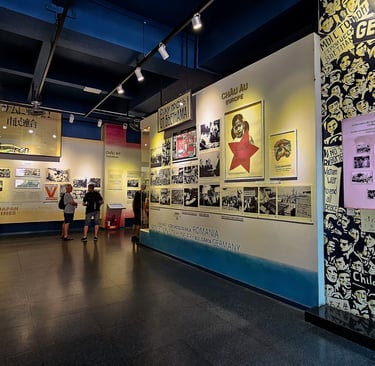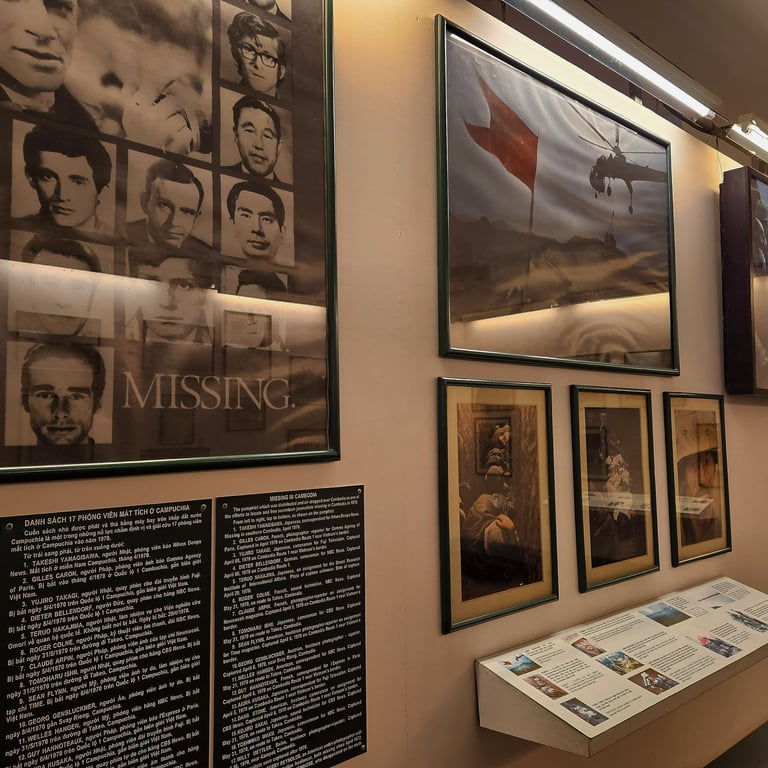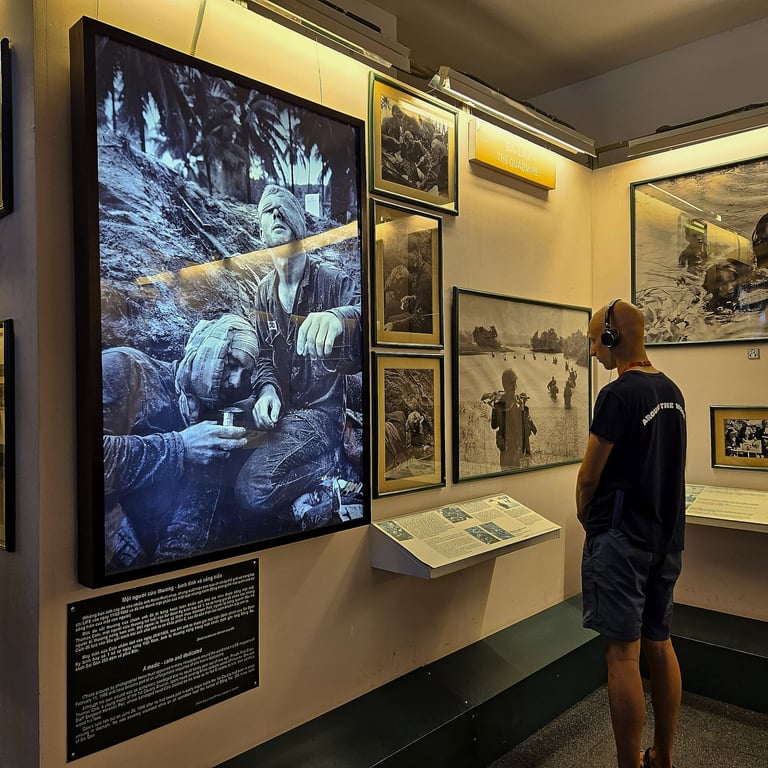Di vietnam
Growing up, Vietnam was always in the news and I made it my business to read anything and everything in the 70s and 80s about why the war years came to be. Later I was able to broaden my understanding when I worked there for ten years or so. More recently I have also been back and forth quite often, so can offer some updated tips. I'll be honest though, I am just scratching the surface here, but you've got to start somewhere! It is true that Vietnam is one of the preferred Southeast Asian destinations nowadays and almost unrecognizable from the time that I left (2014), so you'd better go (di) quickly, while the key elements are still intact. 'Hectic charm' I'd call them.
tam coc, Ninh Binh Province
Row that boat!
The set-piece trip at Tam Coc in northern Vietnam involves being rowed along the river which takes you under three caves, before turning round and returning by the same route. Keep right, obviously. The metal boats cruise along, being propelled by rowers of all ages and genders. It’s 1.5 hours of continuous rowing with no breaks. The secret? Sit back and control the oars with your feet. It sounds like a losing recipe but honestly, the rowers have complete control, being able to rotate the oars, steer and change speed, all while using their hands for something else, like holding an umbrella. Impressive. Nice to see many of the ladies wearing jolly socks. For comfort or to keep the sun off their feet?
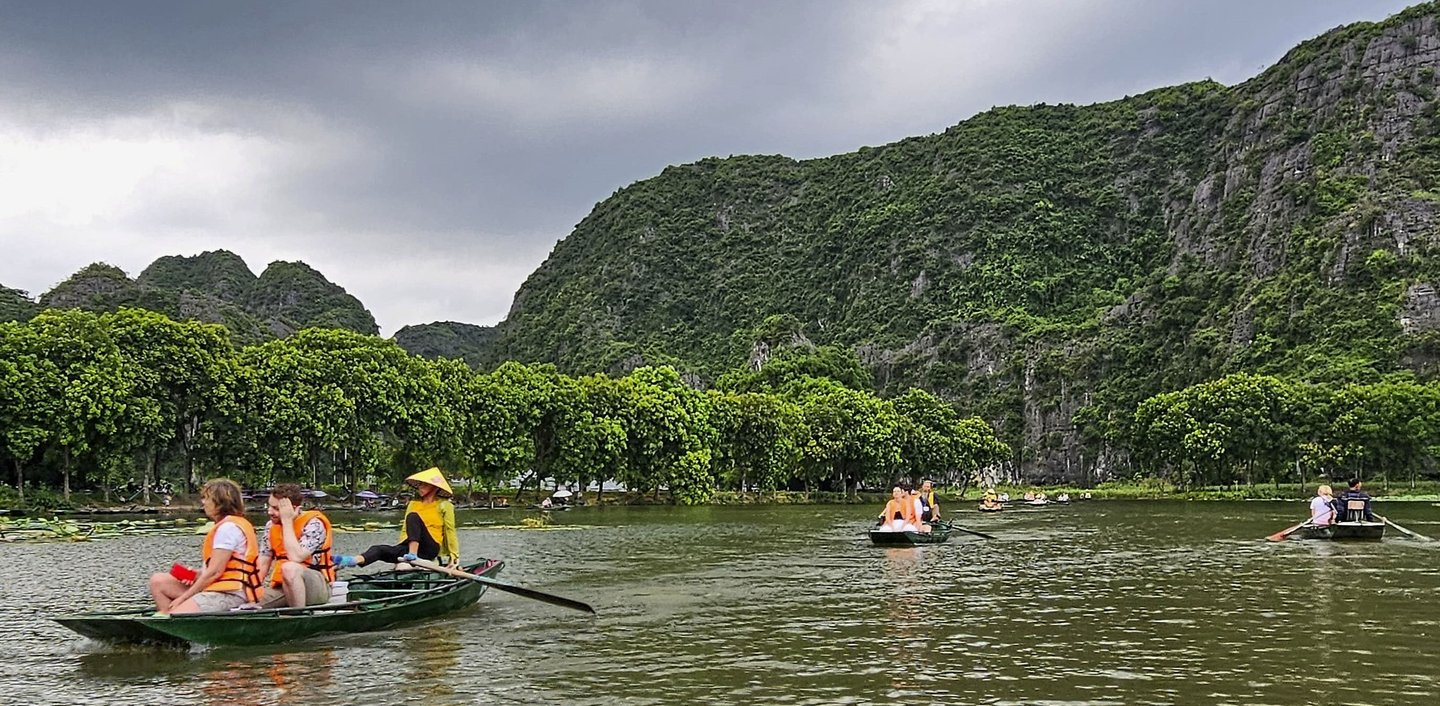


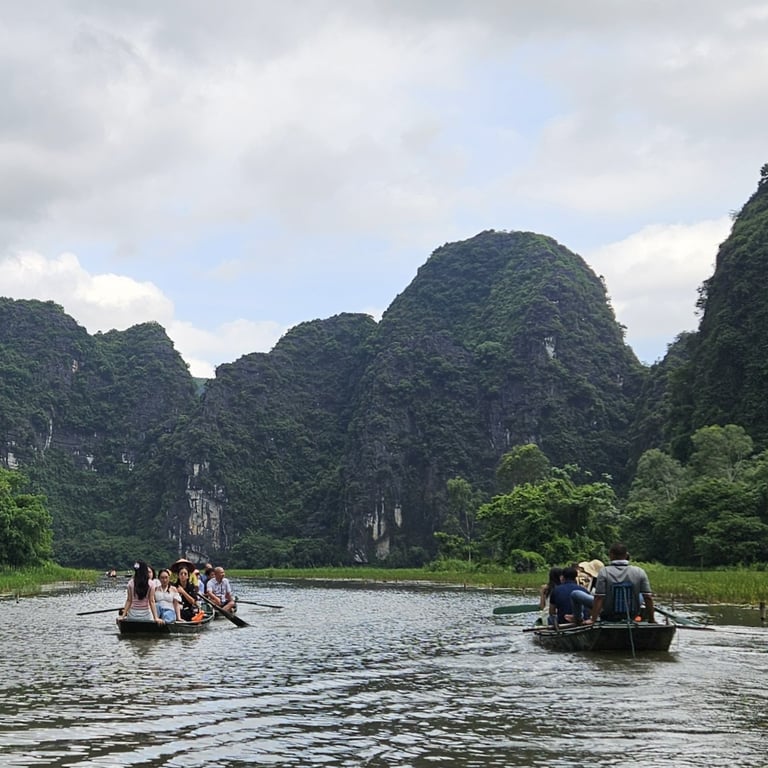

Halong bay
Pirate Paradise
You get the impression that Halong Bay cruises are big business. It’s not just the number of boats out there, it’s the obvious quality on show. However flash you think your boat is, there will be another hoving into view that puts yours in the shade (all built in Haiphong apparently). It did also seem that the high-end super-yachts were anchored in a rather exclusive looking bay. The everyday tubs seemed to be relegated to Cat Ba to jostle for a stretch of clear water. The Cap’n lamented that the older craft can’t easily trade now due to the demand for nouveau swish. Just 30 were on the boat being a Monday, but a quick calculation reckoned that it was bringing in over $12,000 for just a one-night stopover.
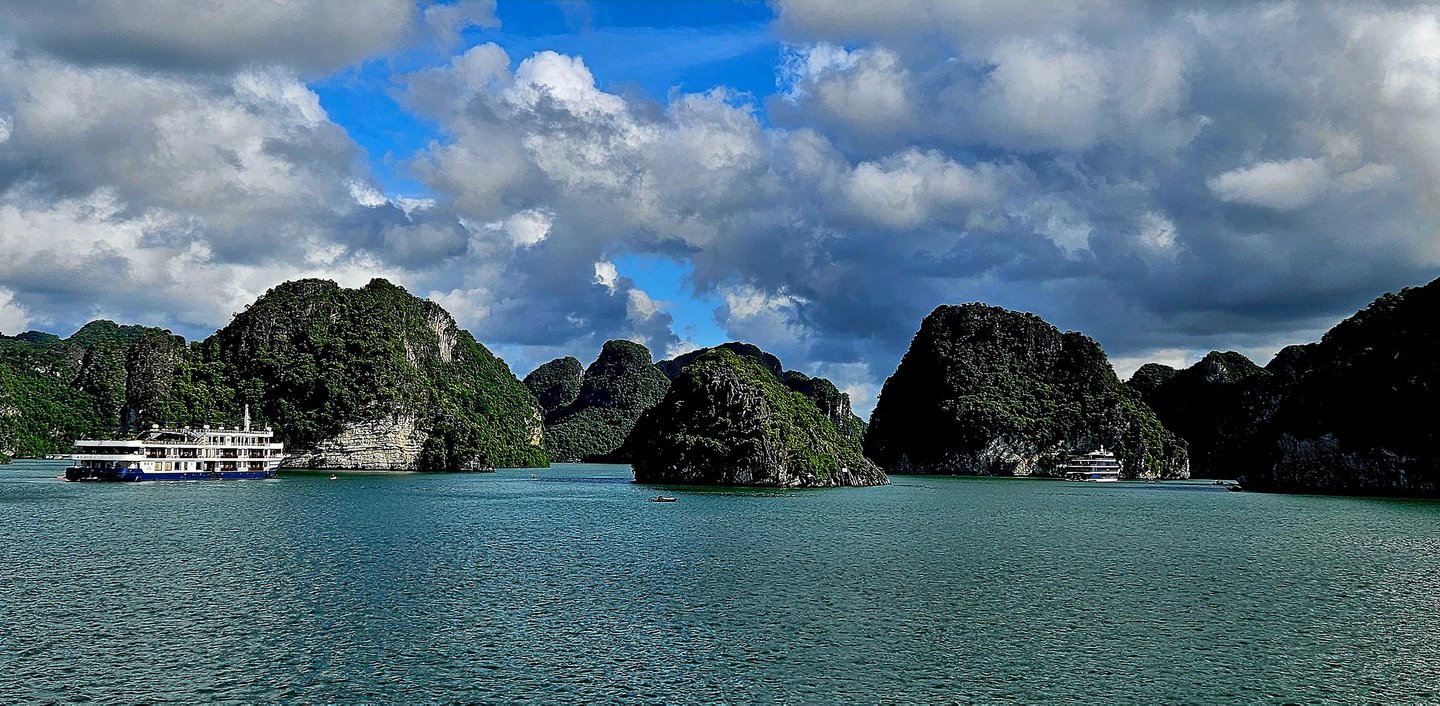

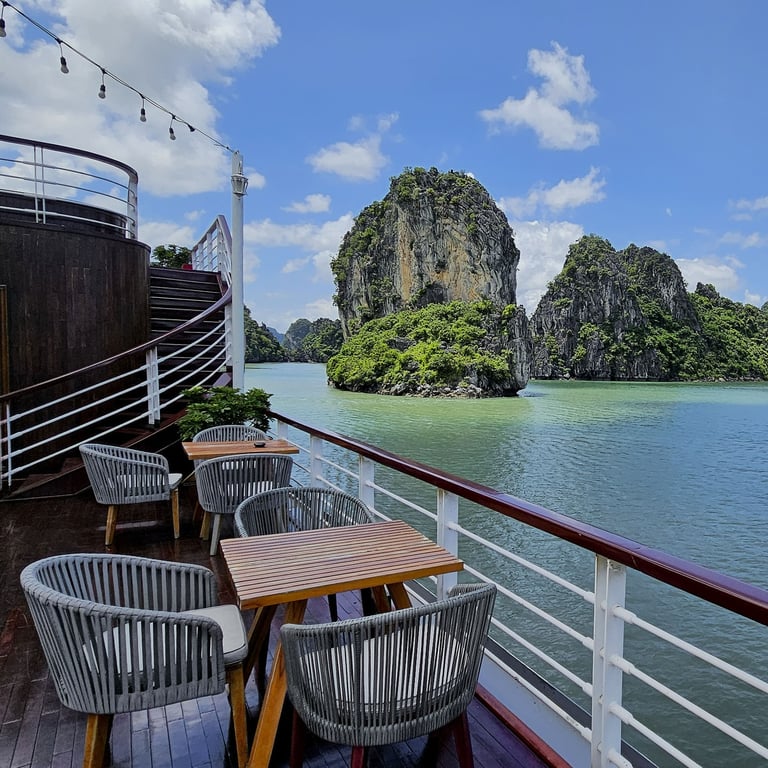


saigon central post office
Picture this
There isn’t much cause to send a postcard these days. Likely as not you will be home before the addressee actually receives the card, so you can tell them all about your trip in person. The main reason for the card anyway is to loudly declare: ‘I am here, and you are there – Yo!’ The more exotic the location the more the card becomes a statement. There is one exception though, and that is to post it from a world-renowned attraction. As attractions go, a state-of-the-art post office is pretty cool. Looking at the folks scribbling away, I imagine that that would be the first card that they have written in years. if ever.
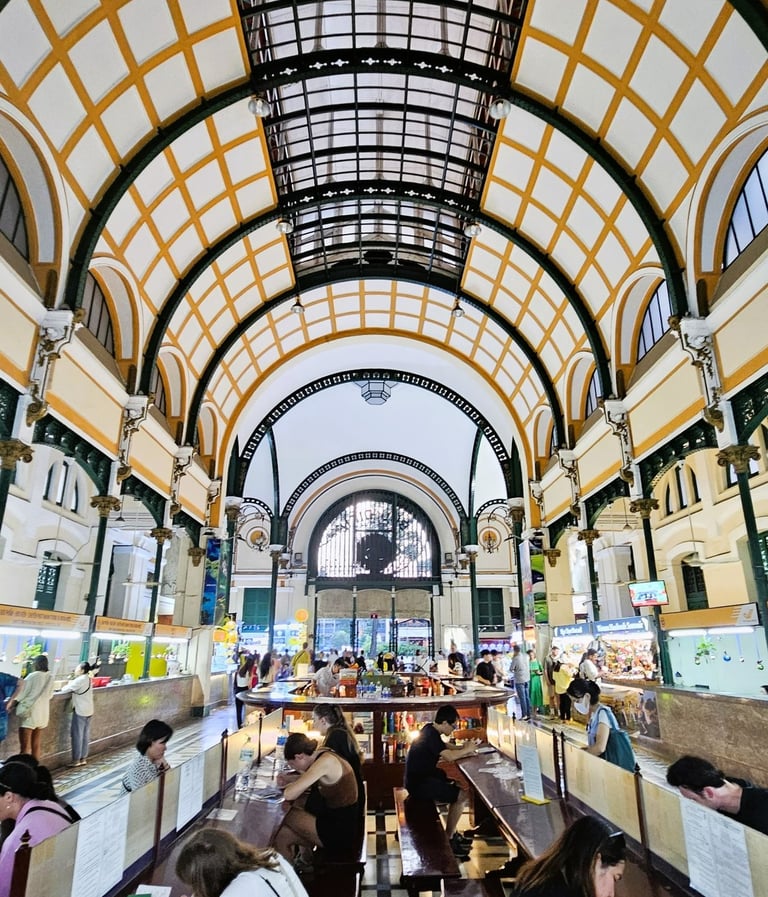

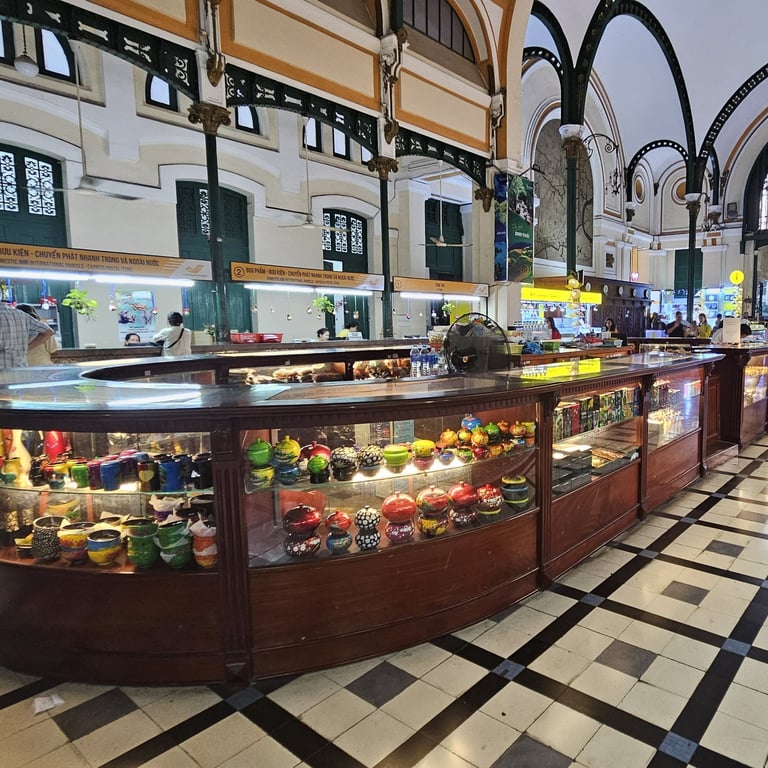
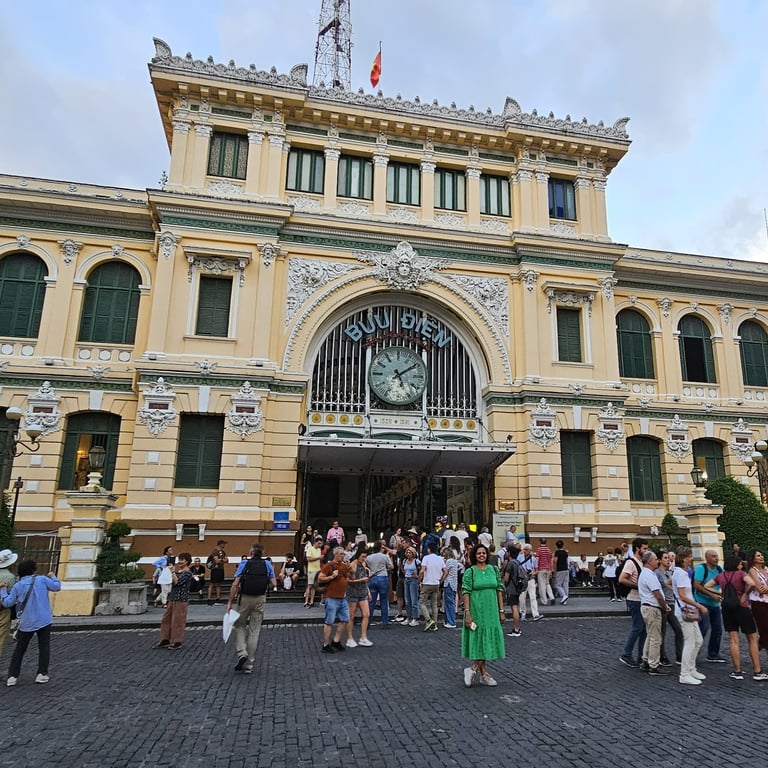
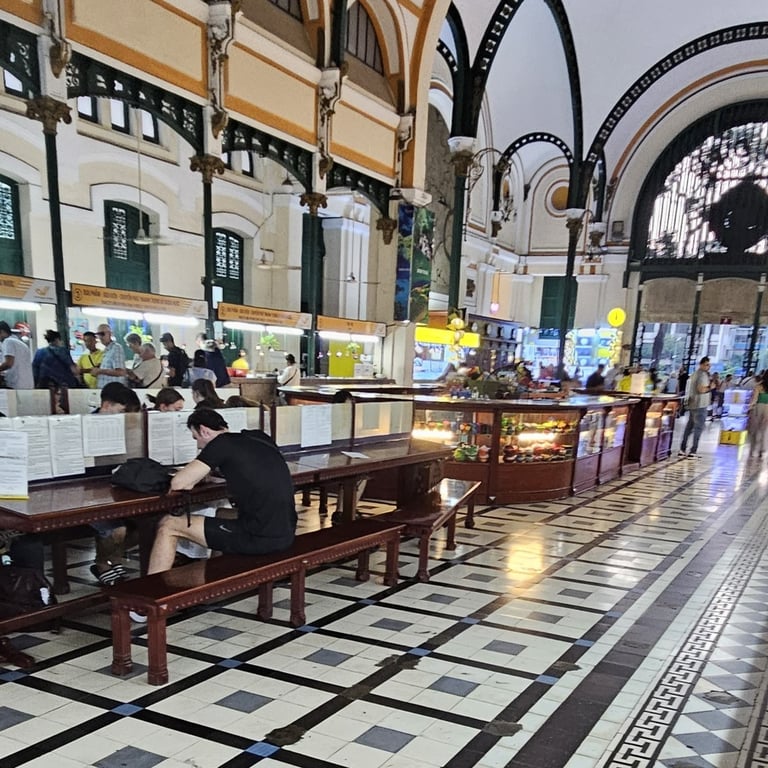
train street, hanoi
Breathe in...
If anybody carried out a risk assessment using standard western criteria, they’d close this place down immediately. In fact, the red pen would appear before even turning to page 2 of the checklist. The trains come through at set times, so café staff rope in as many patrons as they can to make a million or so dong in twenty minutes. They then repeatedly implore you to tuck your knees in as the behemoth approaches. And you do sit rigid! It’s not just the fact that you could reach out and touch the carriages as they pass, it’s the realisation the tons and tons of hulking great metal that would reduce you to a pulp, is grinding through your personal space. It’s like looking over a 25th Floor balcony while your brain processes the ‘What if?’ A death-wish just inches from your nose. No wonder everyone clapped once the 25 coaches had trundled by.
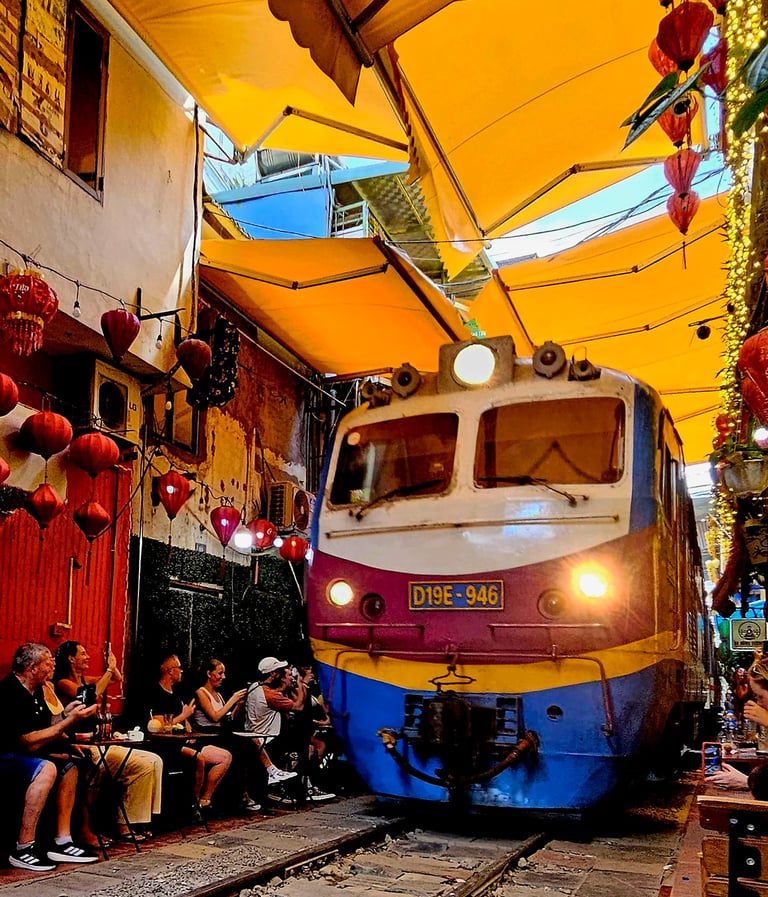

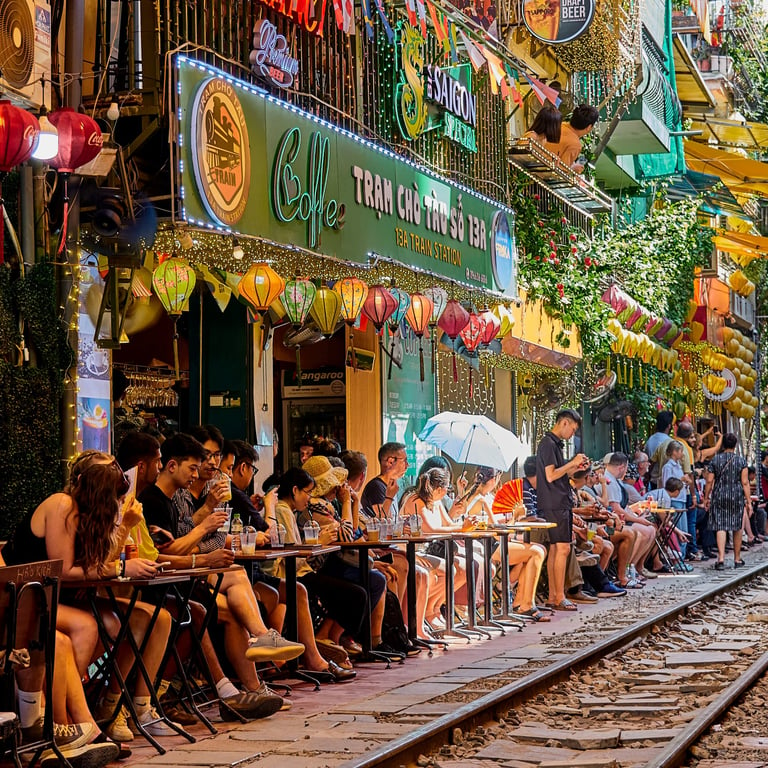
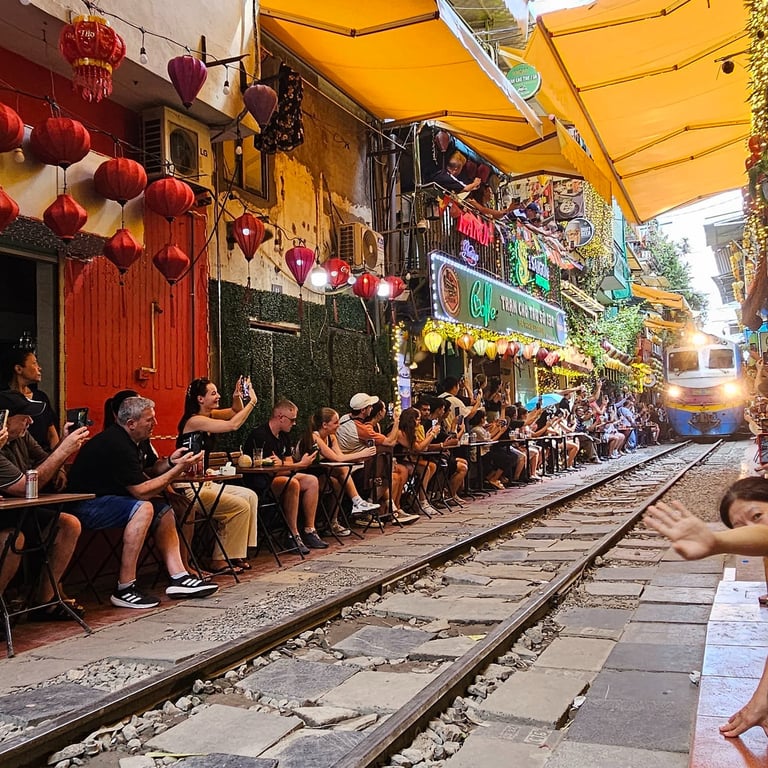
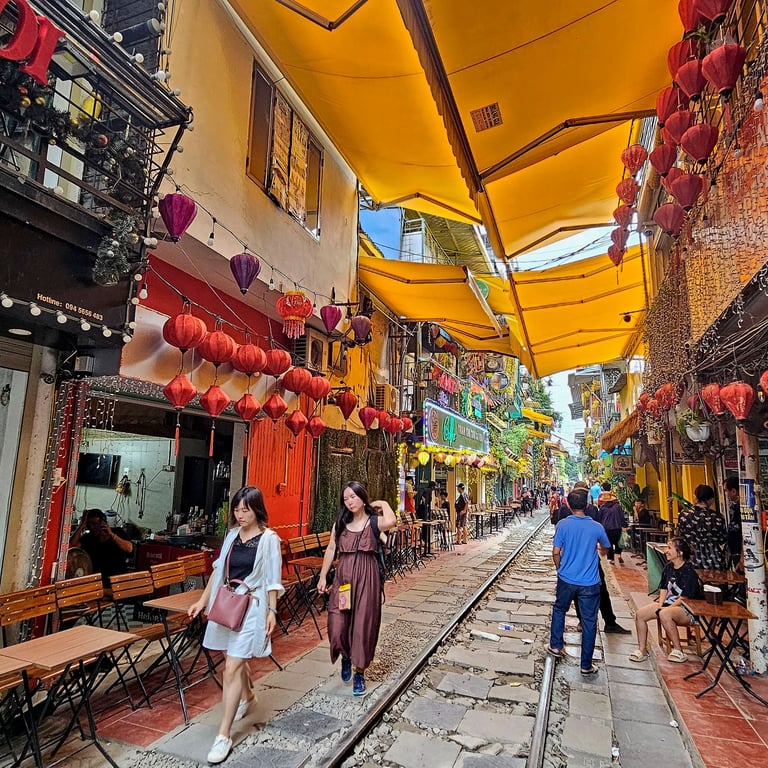
Ba thien hau pagoda, saigon
Smoky sunbeams
Ba Thien Hau Pagoda in Cholon was built by Chinese immigrants in 1760. Sitting on the main road behind green railings, you could be forgiven for walking straight past it, which is exactly what I did (a long way), with the bright sunshine obscuring my map-screen. Once inside you are stepping back in time as you criss-cross from the shadows to the striking reds and yellows in smoky sunbeams. Unique to the temple are the spiral pendants from which you hang your paper wish. Together with the incense this sure makes for a spiritual encounter. Some places just exude holiness, this being one of them.
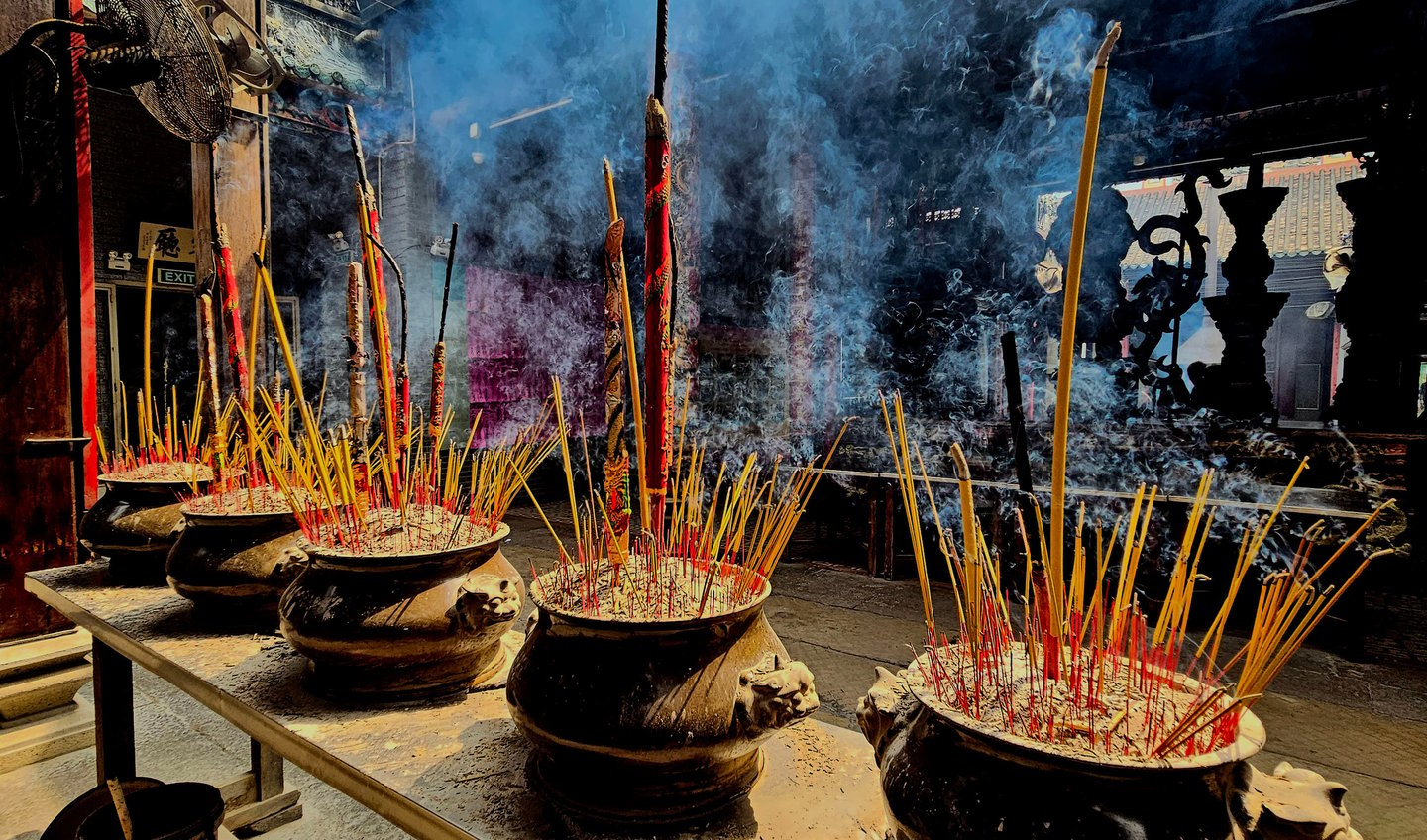

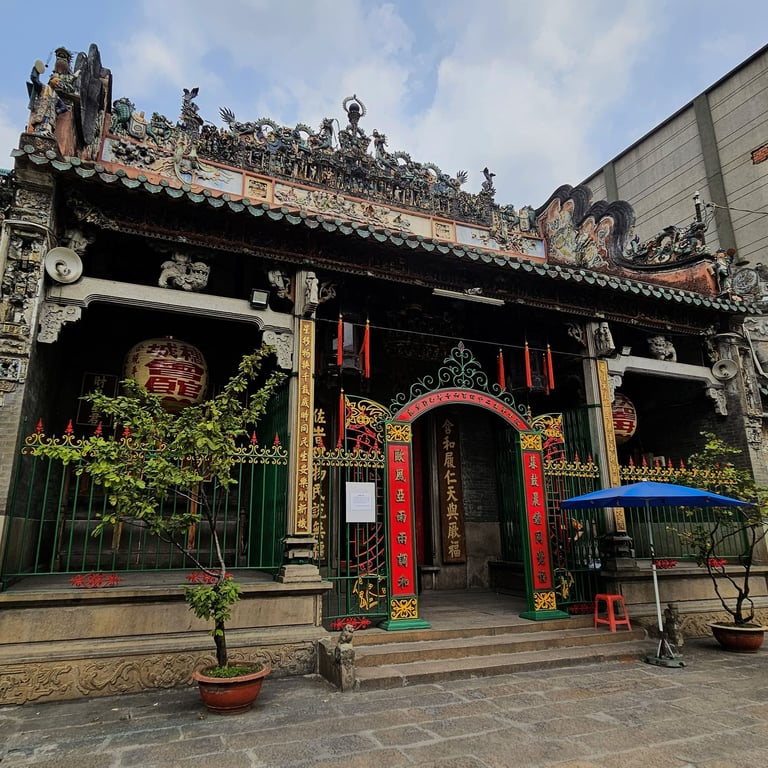
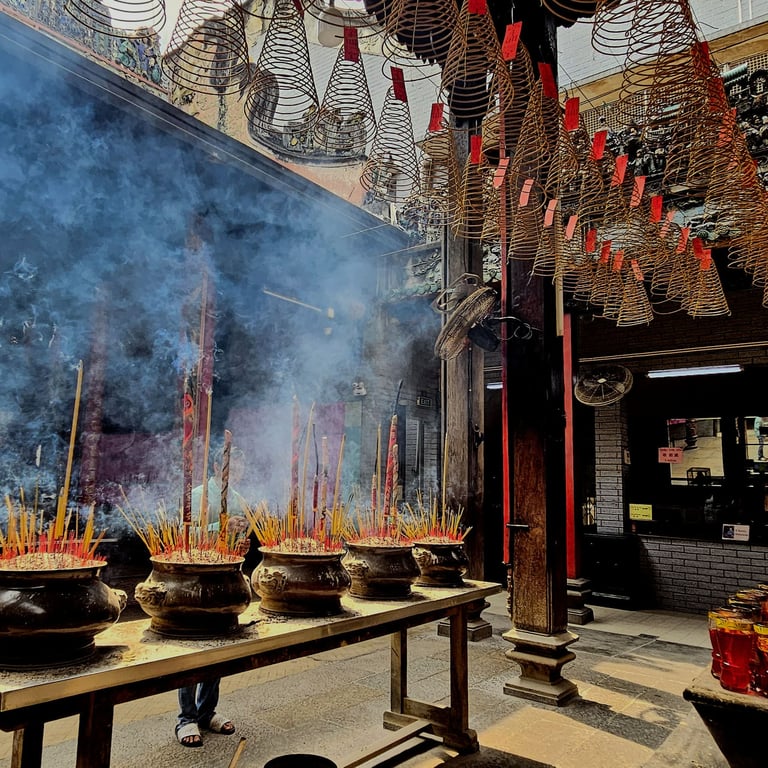
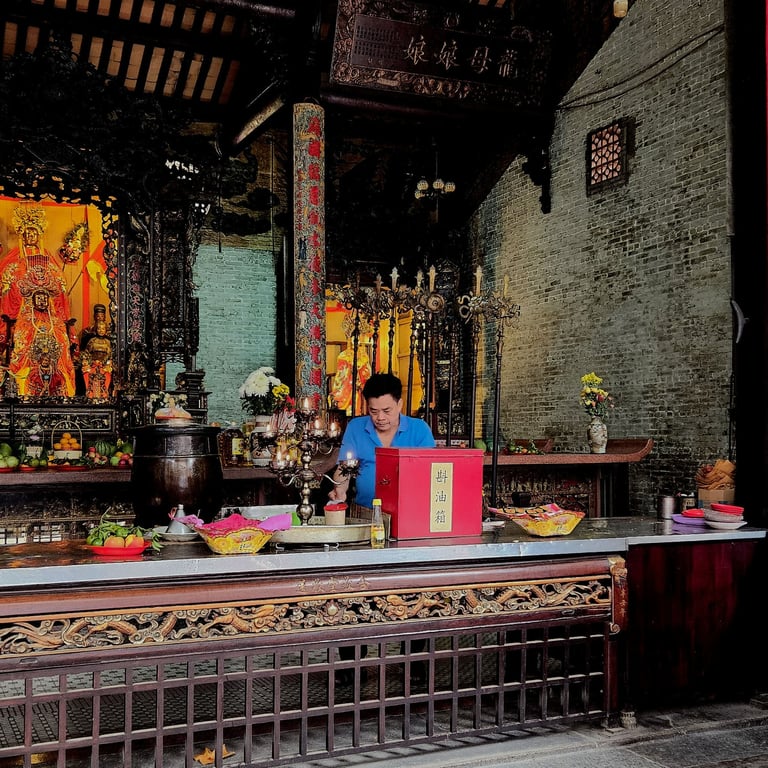
Hang Mua, ninh binh province
Goodbye world
The climb to Hang Mua (Mua Caves) in Ninh Binh Province is a tough one. There are 500 steps to the top where you can make a wish next to the stone dragon. Depending on the weather and the crowds, it may prove to be a challenge (go early in the day), but the scenery is worth it. The jagged karst landscape, lotus filled lakes and sinuous rivers, make for truly postcard-esque views. One watchpoint: there are no handrails, and the steps are mightily steep and uneven so, step at a time. Take a tumble coming down and it would be Good Night Vietnam, or more likely, Goodbye World!
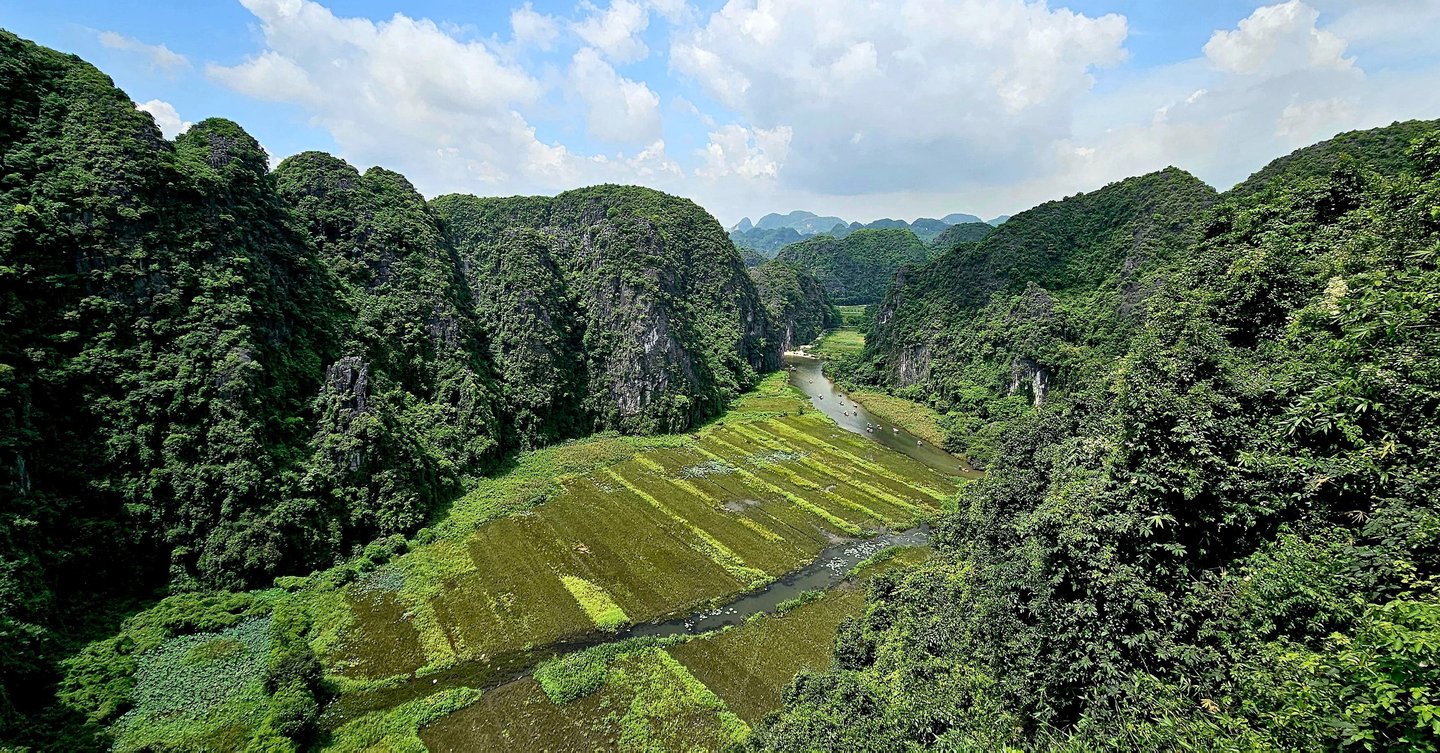

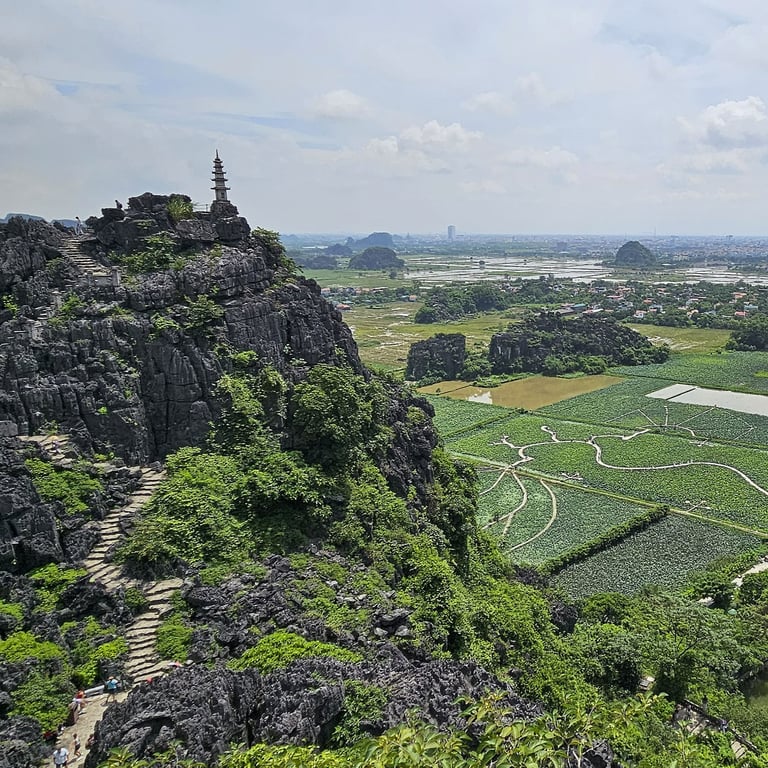
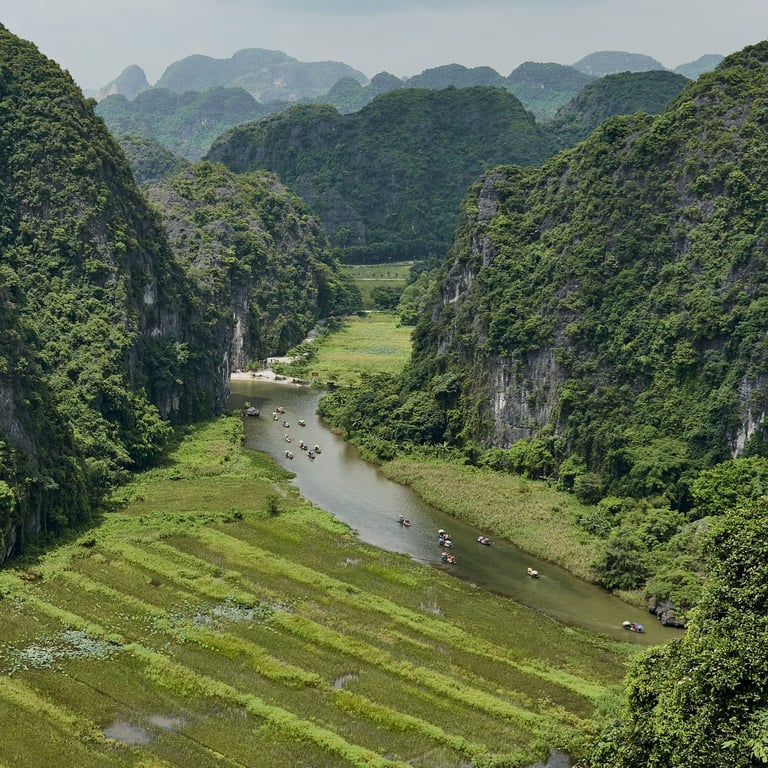
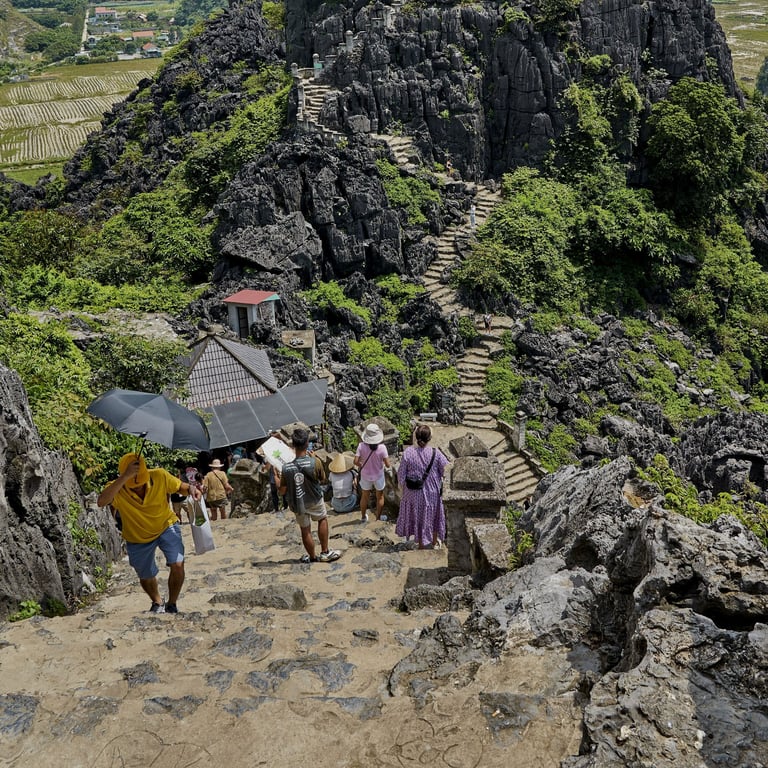
Book street, saigon
Open a new chapter
Book Street which is a small alley off Hai Ba Trung presents such a refreshing sight – people are standing around looking at books, rather than their phones. Whatever next! The twenty outlets plus the tables down the middle of the road offer mainly new editions, which far outnumber the second-hand books also on display. The majority of the books are in the Vietnamese language as you would expect, but there are also foreign titles for you to sit and thumb through at the various cafes lining the lane. As always when books are in abundance, calm is the order of the day as folks rediscover print.
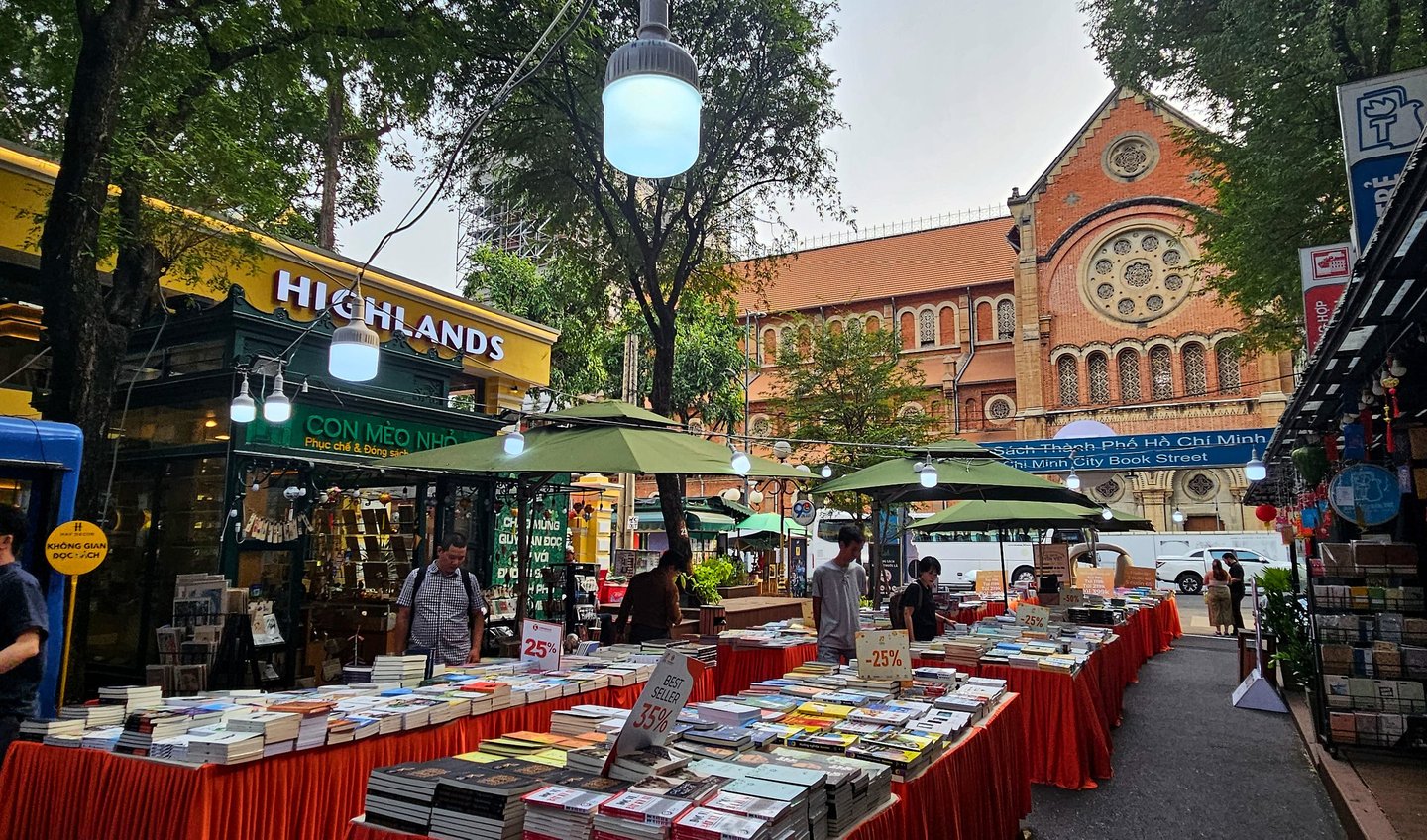

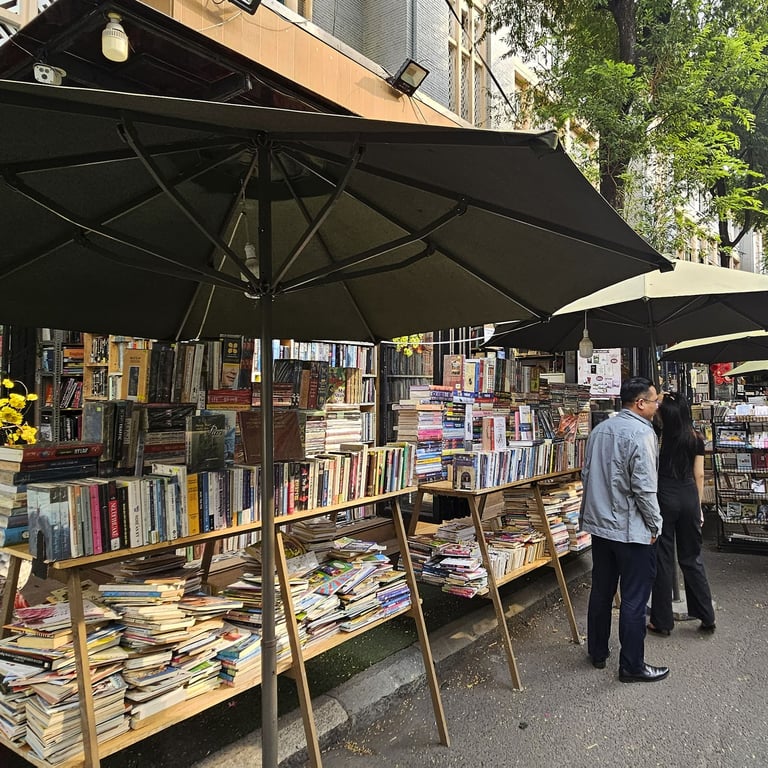
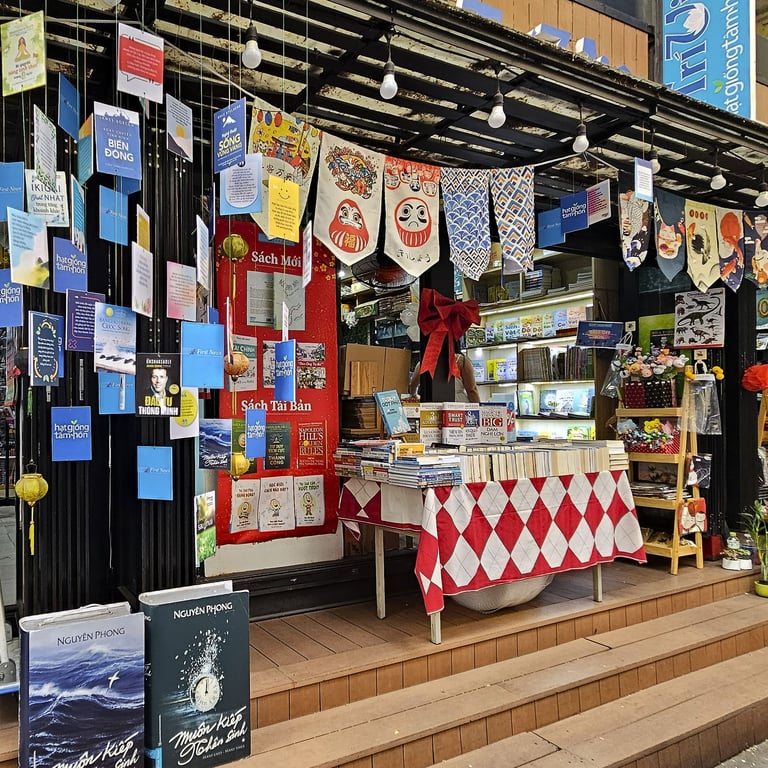
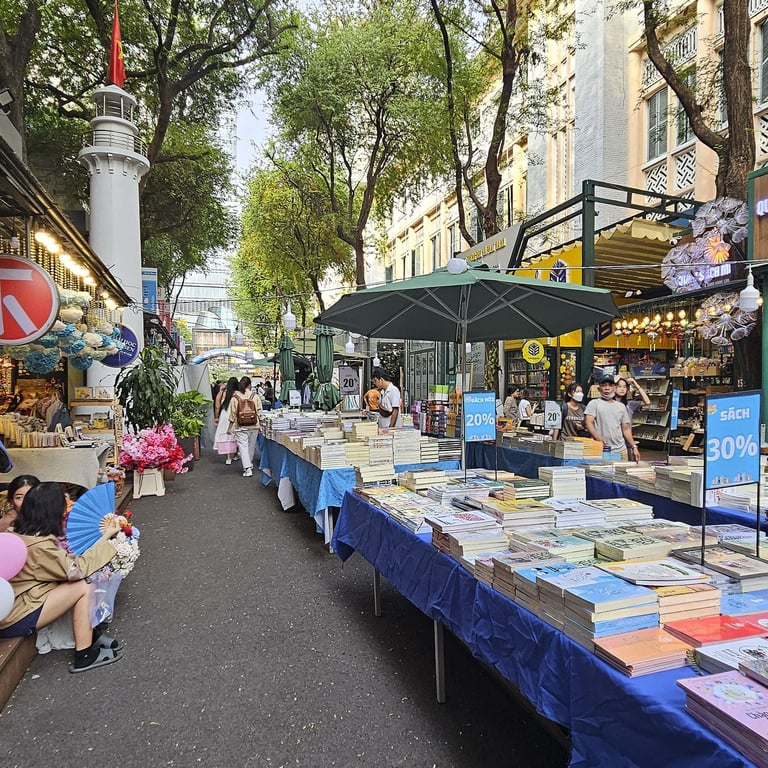
cau the huc, hanoi
The Old Quarter
Cau The Huc is the red bridge leading to the island temple Den Ngoc Son in Hoan Kiem Lake. Being right next to the Old Quarter it is guaranteed a constant flow of visitors, during the day or at night time. It is also very photogenic regardless of the time of day; the dazzling evening illumination will present a challenge for your camera though. Built in 1865, the bridge has undergone two renovations since then. Besides the photographers and hawkers near the entrance are youngsters, also in hi-vis vests. Their purpose? To snare you in order to practise their English as they run through their script on a clipboard, catechism-like. What a lovely idea, and a small whoop of delight detected for bagging an actual English guy.
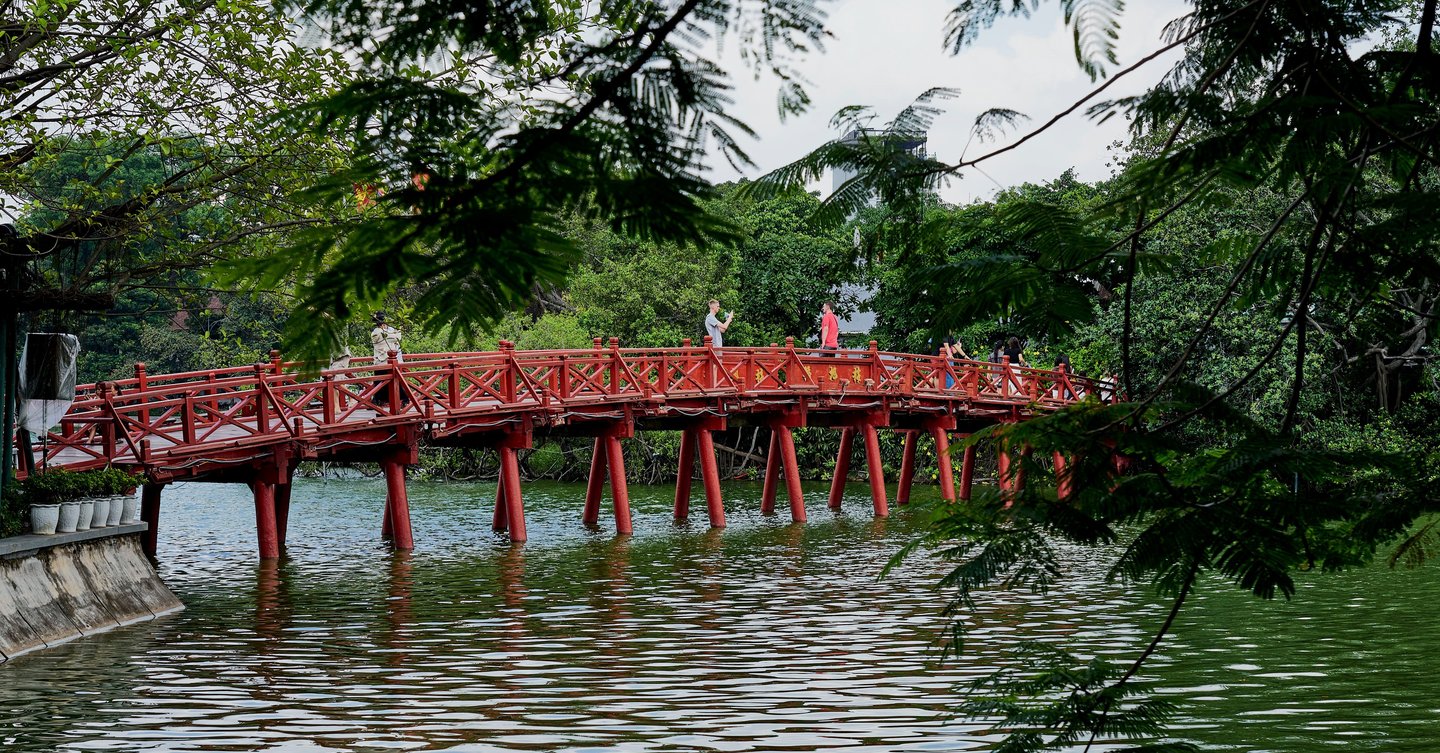

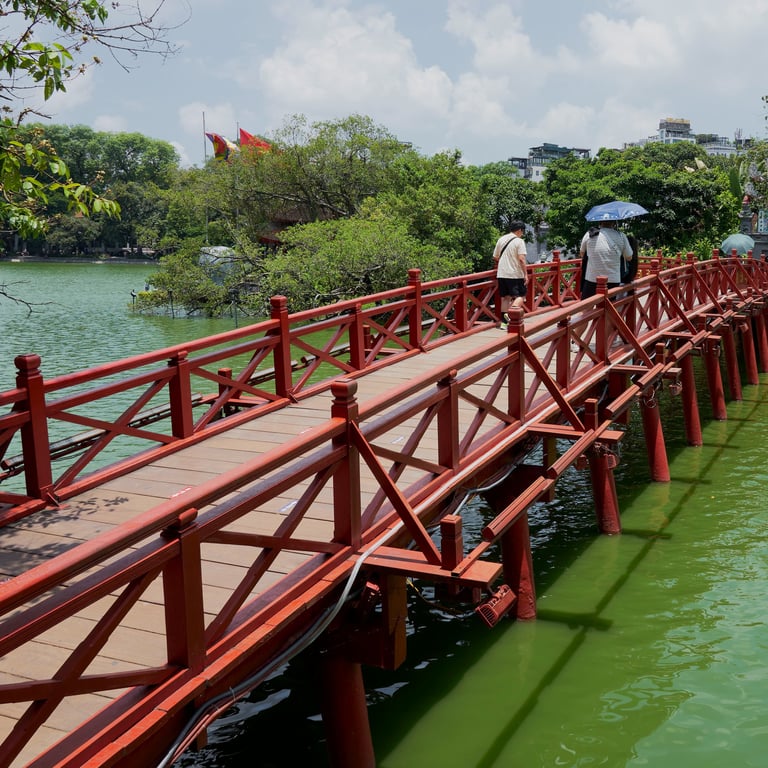
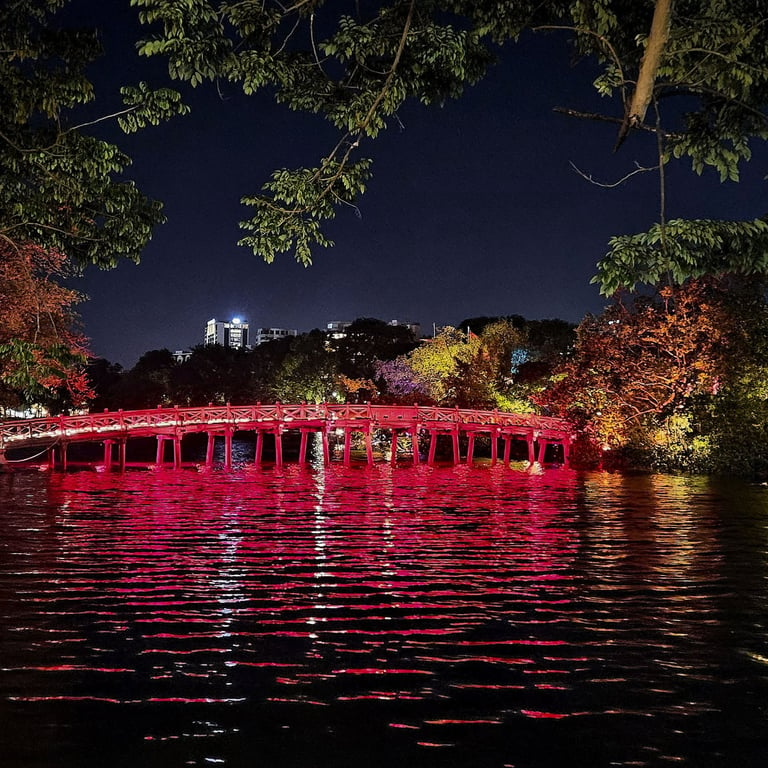
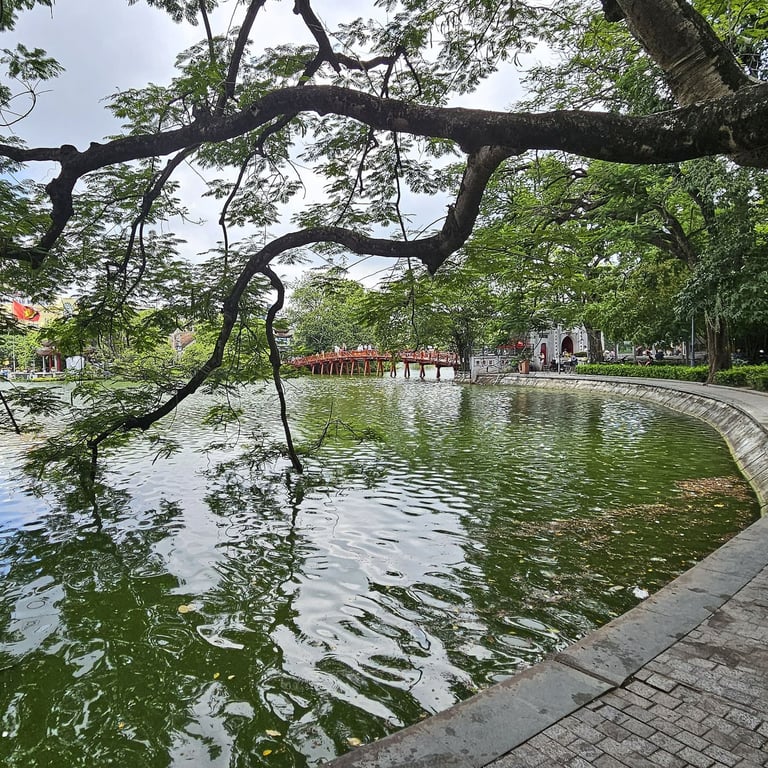
Hao Si Phuong, saigon
Right neighbourly
In Vietnamese a ‘hẻm’ is an alley, pretty much like ‘soi’ in Thai. So, you can number alleys off a long main road like, Sukhumvit Soi 21, or Nguyễn Đình Chiểu Hẻm 100. In Cholon there is an old hẻm built in the 1910s where it is said that everyone knows everyone. That doesn’t come as a surprise once you step inside the tiered alley. It would be difficult for Hào Sĩ Phường residents not to know everyone, along with the contents of their last conversation as well as their laundry basket! Clearly privacy was never a thing. Standing there I was half expecting to be asked to help peg out some washing.
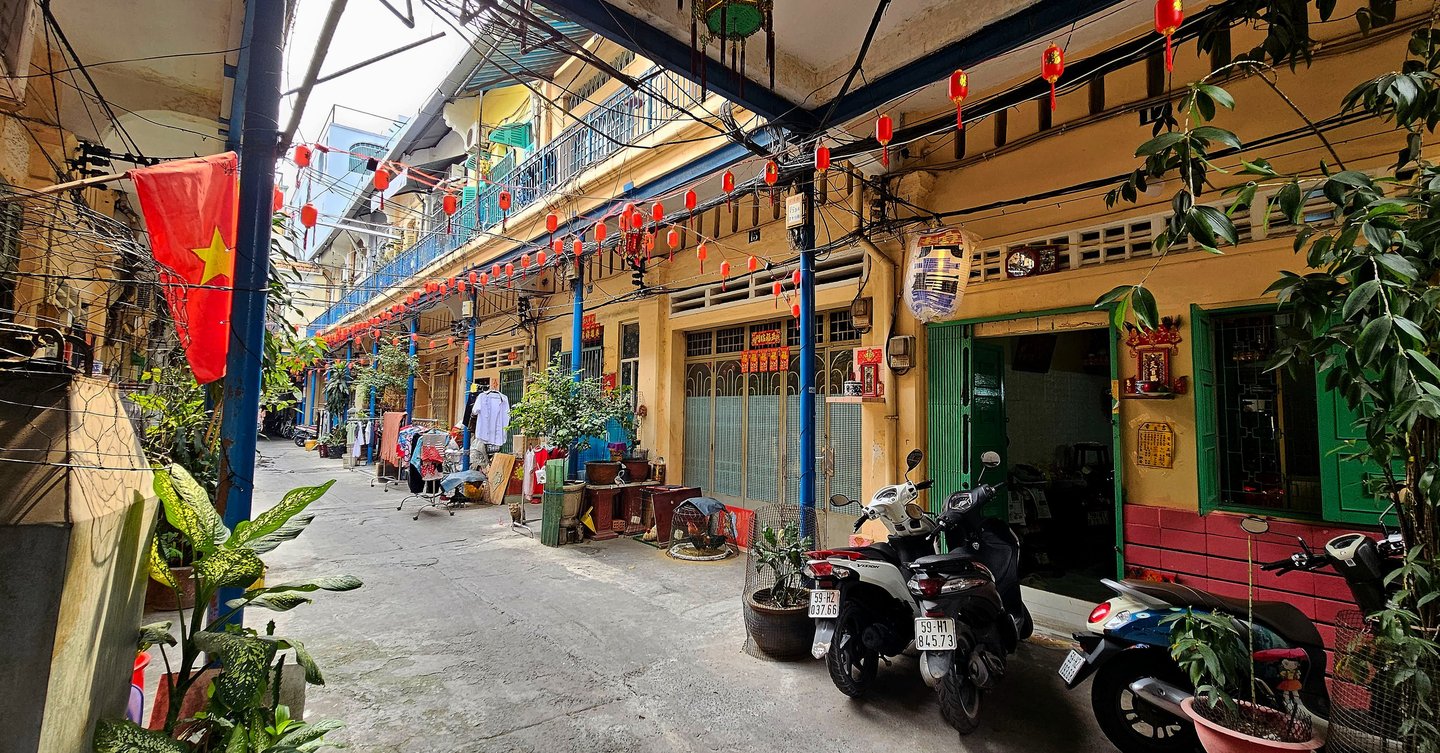

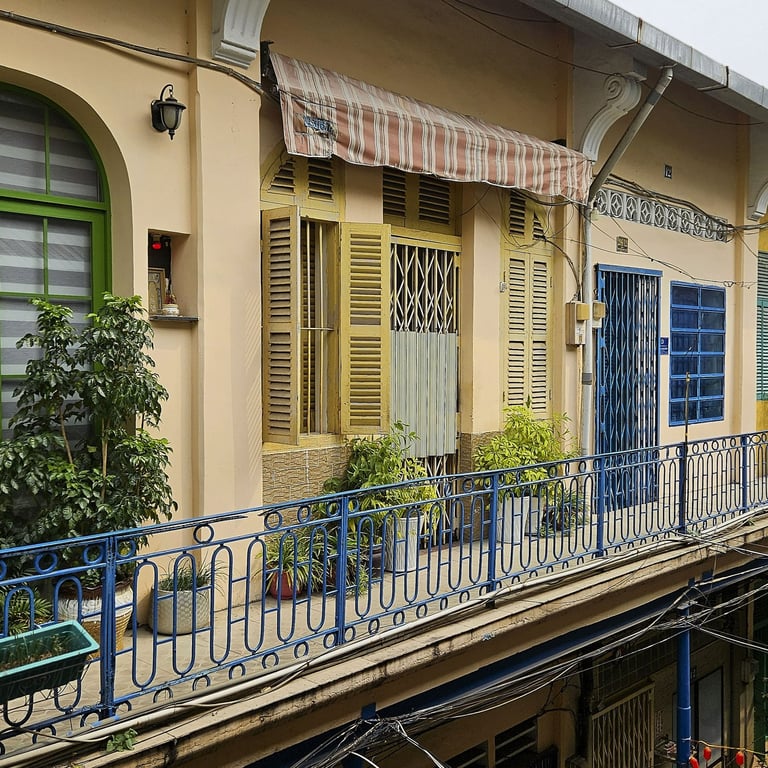
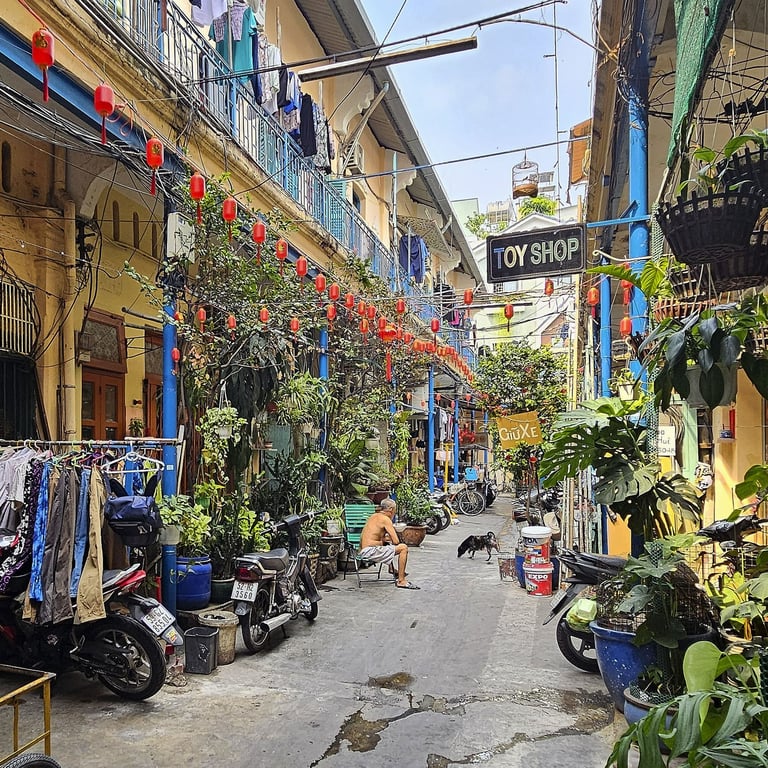
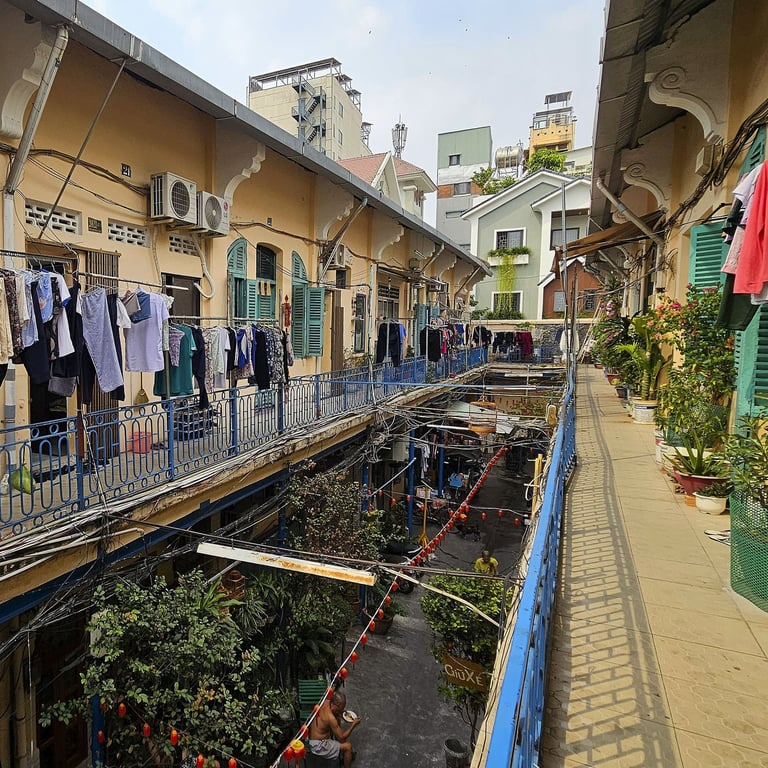
Reunification palace, saigon
1970s tableaux
I had never visited the Reunification Palace until recently, despite having passed it countless times. I thought it would be dull fare for some reason. However, I found the walk round quite captivating as it reinvigorated memories of times gone by, with the décor and displays shining a light on my personal dim recesses. I must have read everything I could find about the Vietnam conflict, but that seems like an age ago. Several times walking round the palace, I felt like Wall-e suddenly waking up after a long slumber, memories crashing back as I stood before some telling 1970s tableau or other.

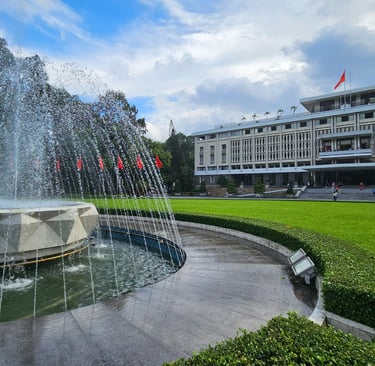
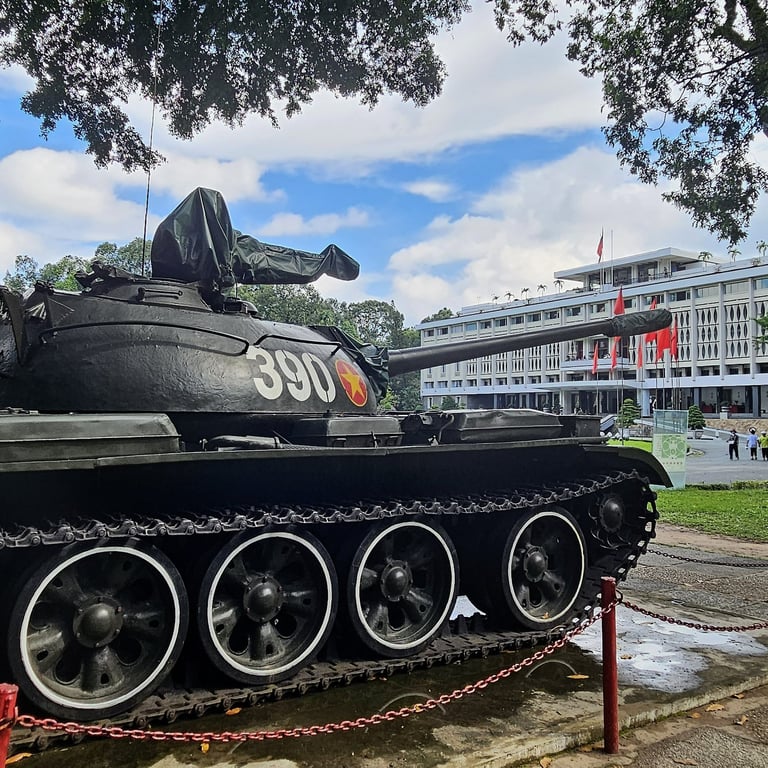
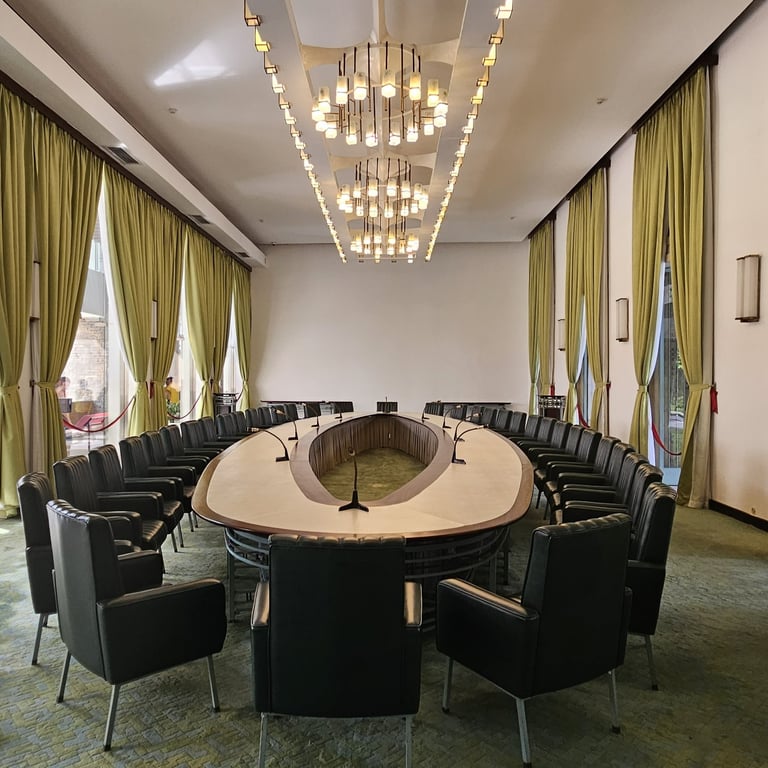
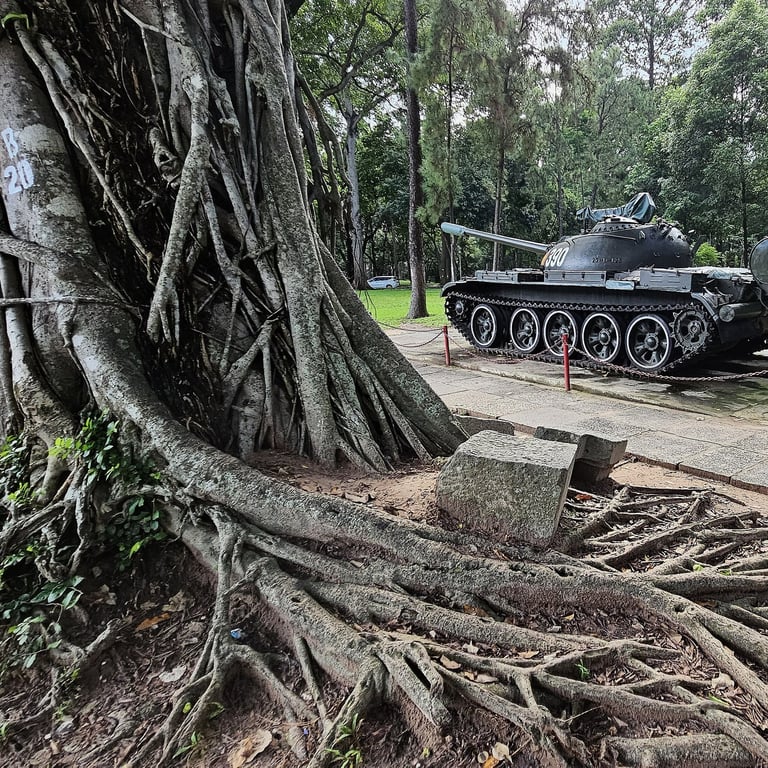
traditional house, hanoi
A tube house
87 Ma May in Hanoi is a traditional house restored in a joint effort between the Hanoi and Toulouse local governments, which has given rise to a further four projects. The house, dating from the late 19th Century shows a traditional narrow façade with rooms and courtyards working their way backwards, away from the street, in a layout known as a ‘tube house’. Behind the street shop are living quarters and the ancestral altar, set out on two floors. Visitors are treated to a guided tour and can watch careful calligraphy brush strokes or ladies making tea from lotus flowers.
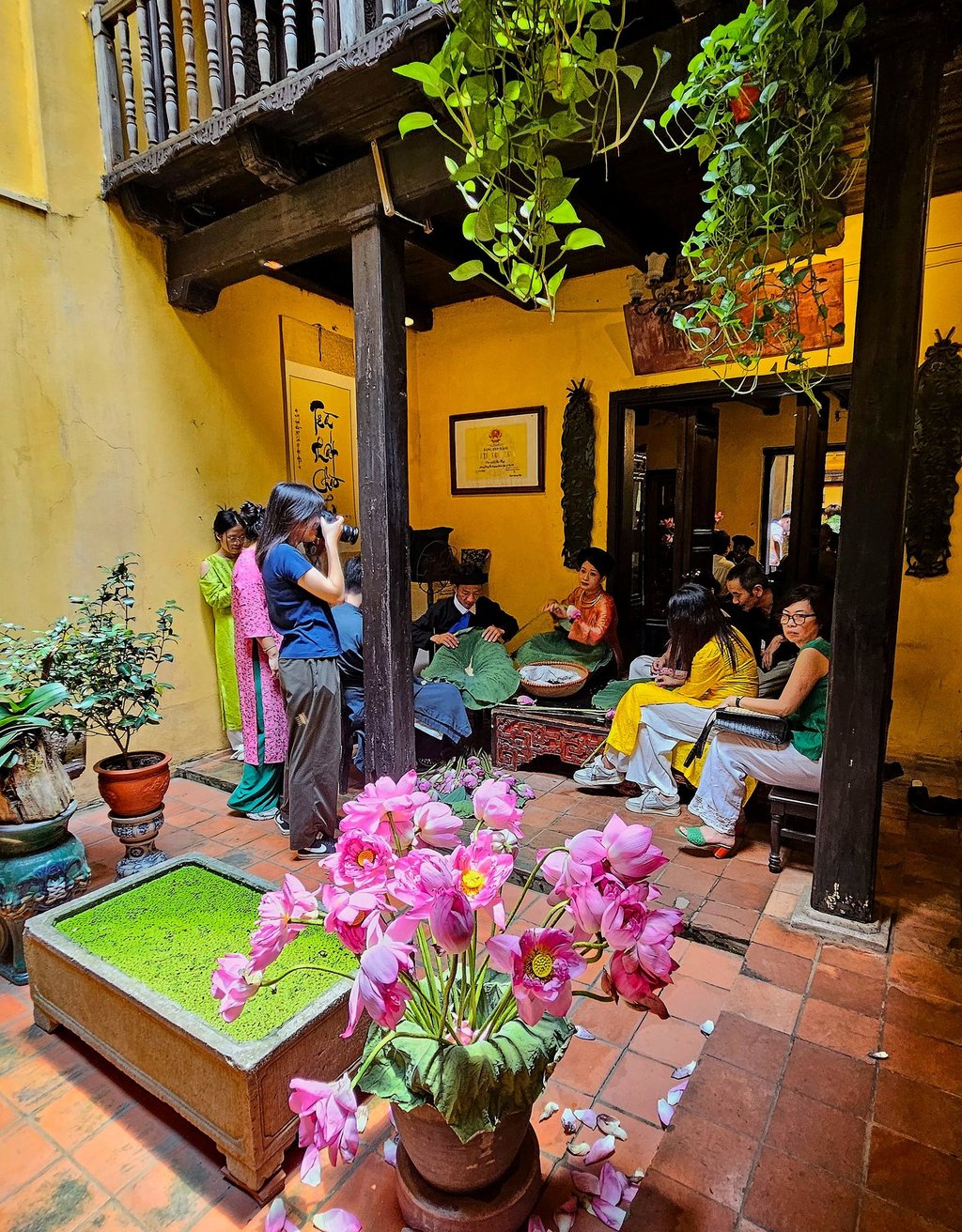

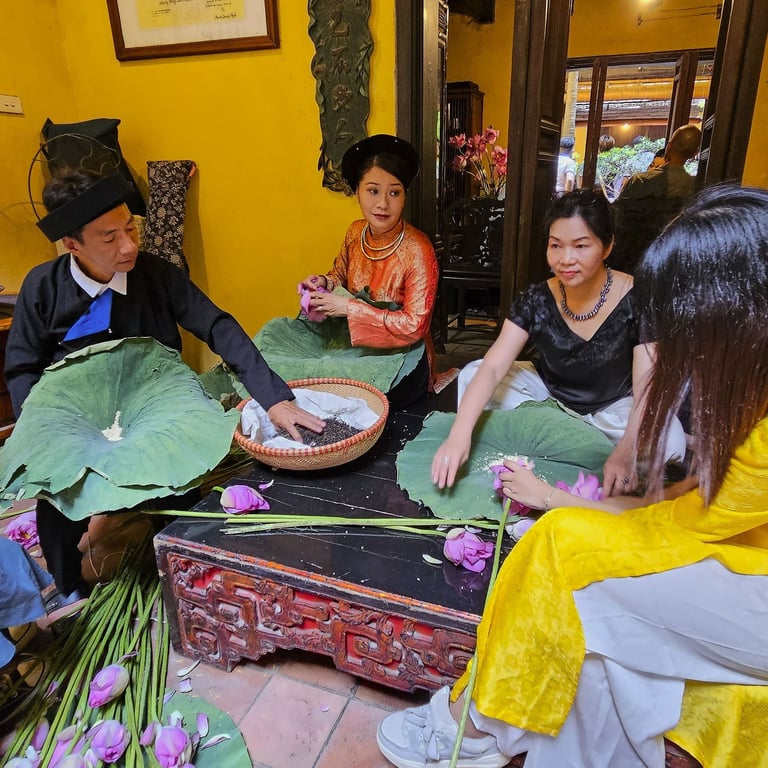
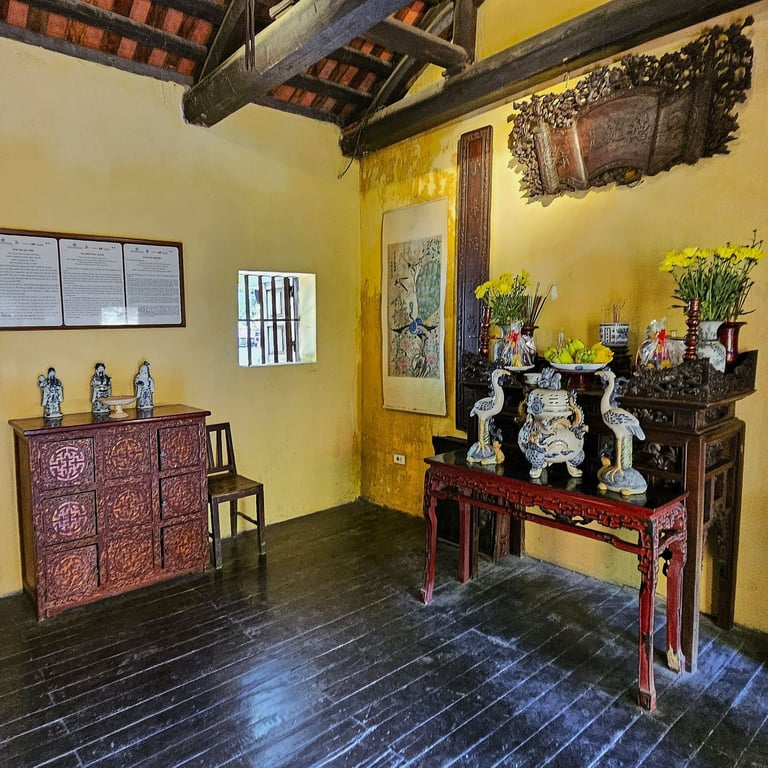
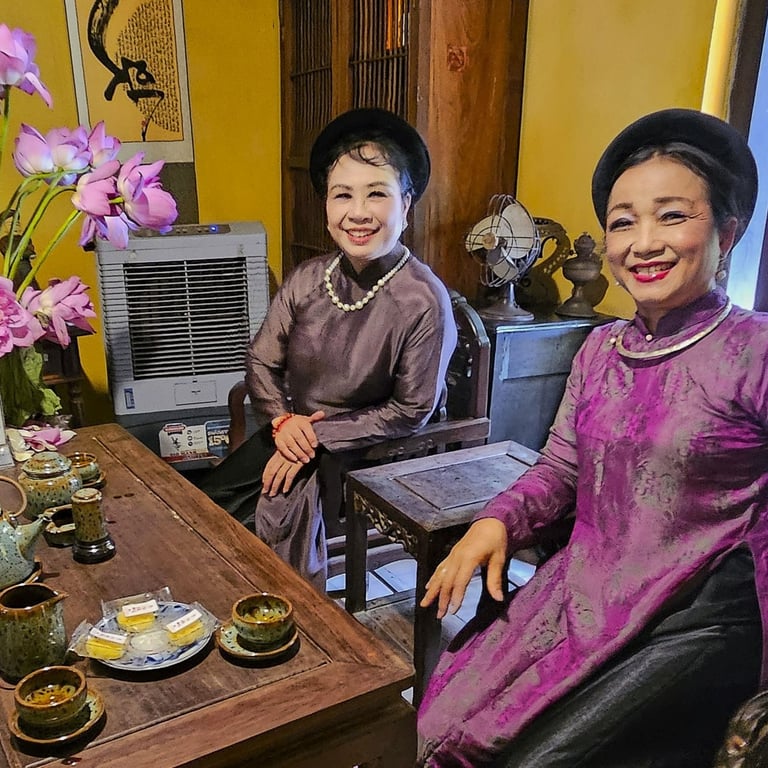
Cafe Do Phu, saigon
Coffee, Sir?
The café that has a history of clandestine intrigue during the war years is now a regular coffee-stop for a young crowd on a Saturday morning. Certainly, apart from me, nobody looked like they were scratching around in the past. Although the setting was personally evocative, with the Vietnam war being the drumbeat of my youth. Most folks looked like they were concentrating on which of the 37 types of local coffee they felt like that morning. In reply to, ‘Have you got an Americano?’ the waiter said, ‘Kind of’. This, of course has two meanings, one is, ’Sort of’ and the other, as was the case this time is, ‘Not really’. One glass of bitter sludge and condensed milk coming up!
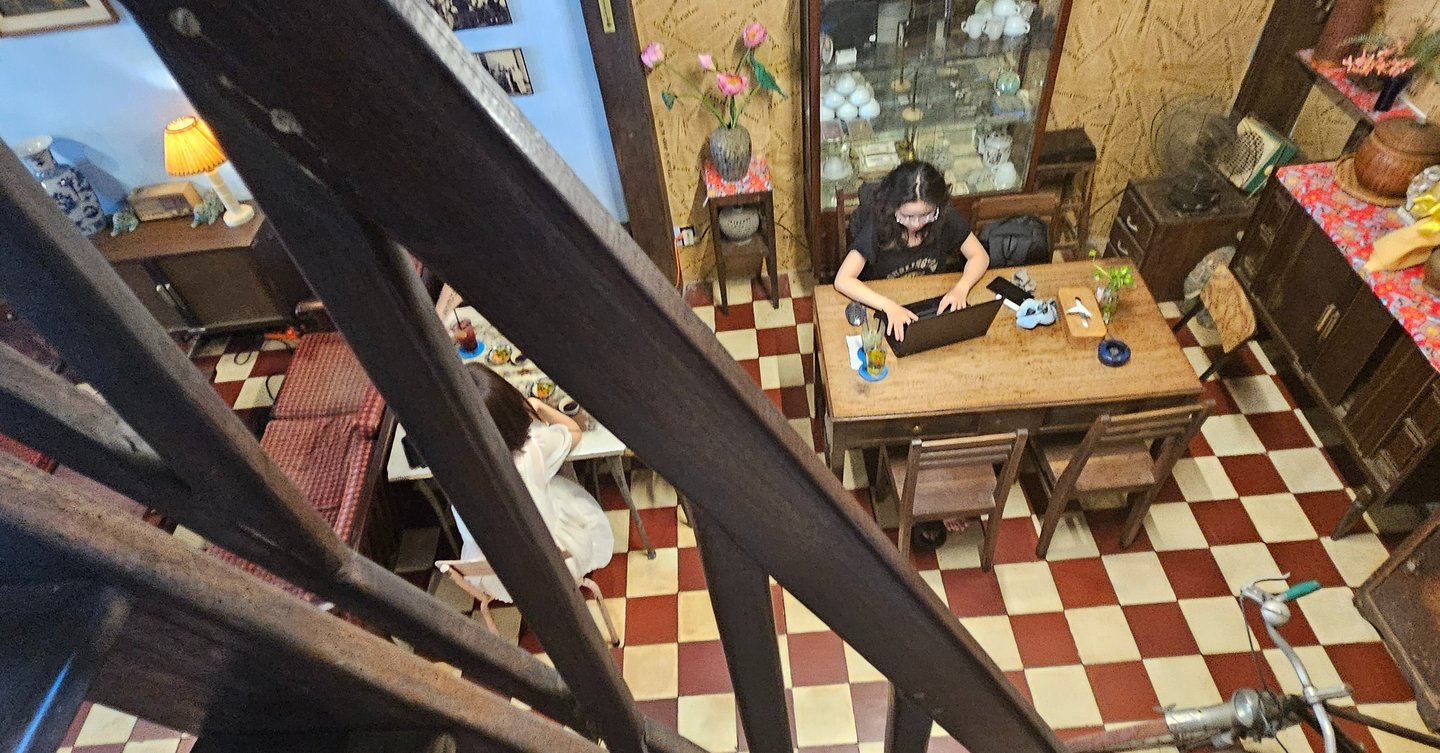

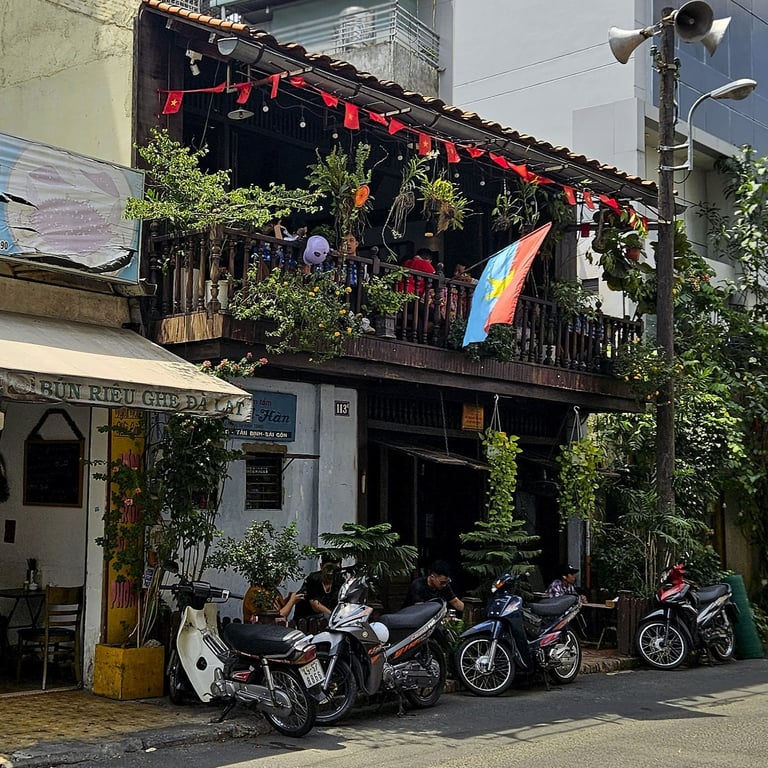
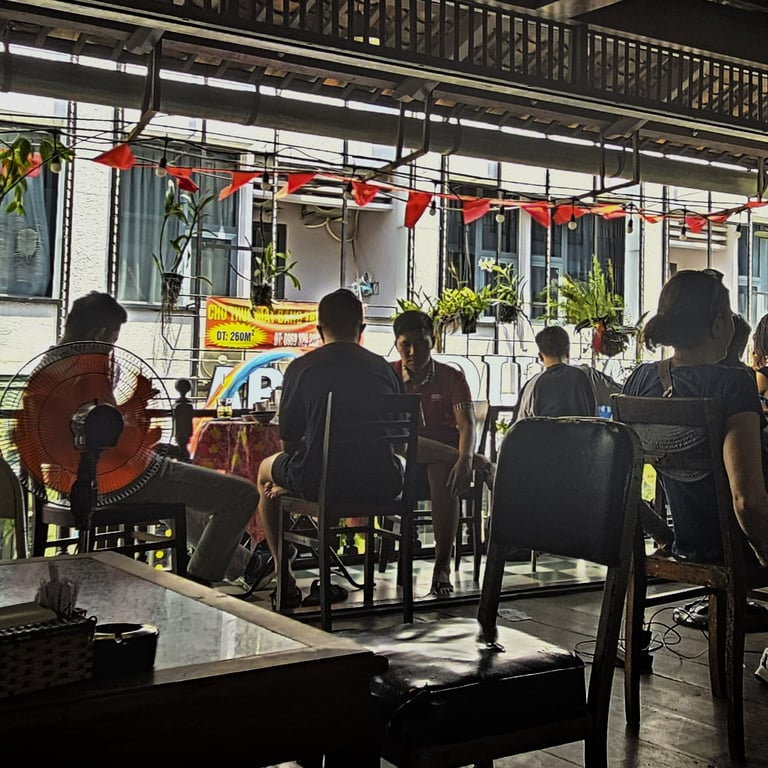
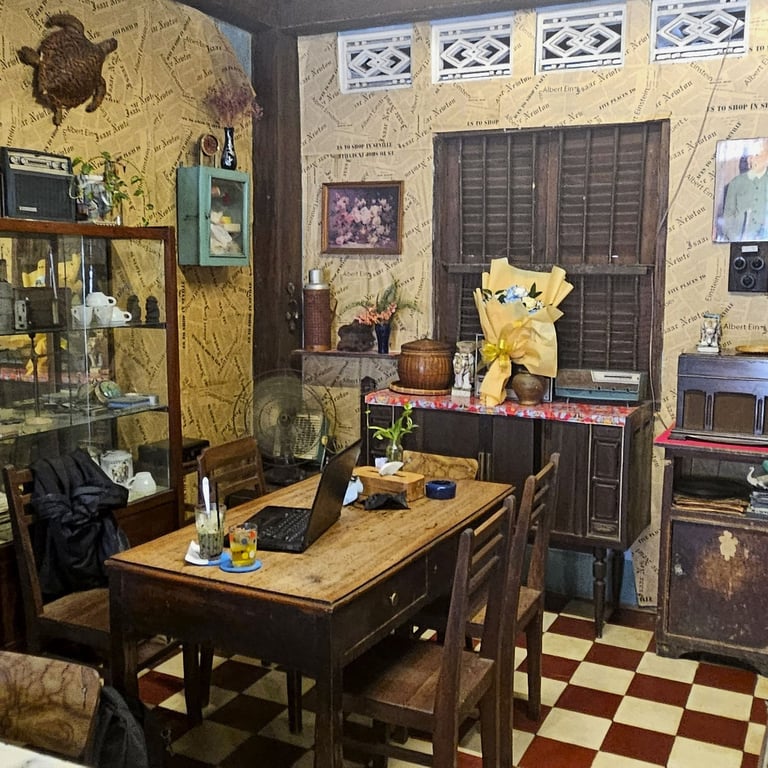
the hotel continental, saigon
Still got it (just about)
Wood panelling and cavernous rooms with high ceilings usually let you know that you are staying in an older hotel. In the case of the Hotel Continental, you are walking the corridors in the shadow of greats. Not just famous names but also momentous events in history. It is a past that the hotel proudly shares in the form of displays and plaques. There have been a few changes since those heady days, but you might wonder who was responsible for the refurbishments. Those carpets - what on earth were they thinking? By the time you have descended to breakfast you are practically cross-eyed. Luckily the B/F setting does rather uncross things quickly enough, sitting as you are in an elegant, old-style outdoor patio setting!
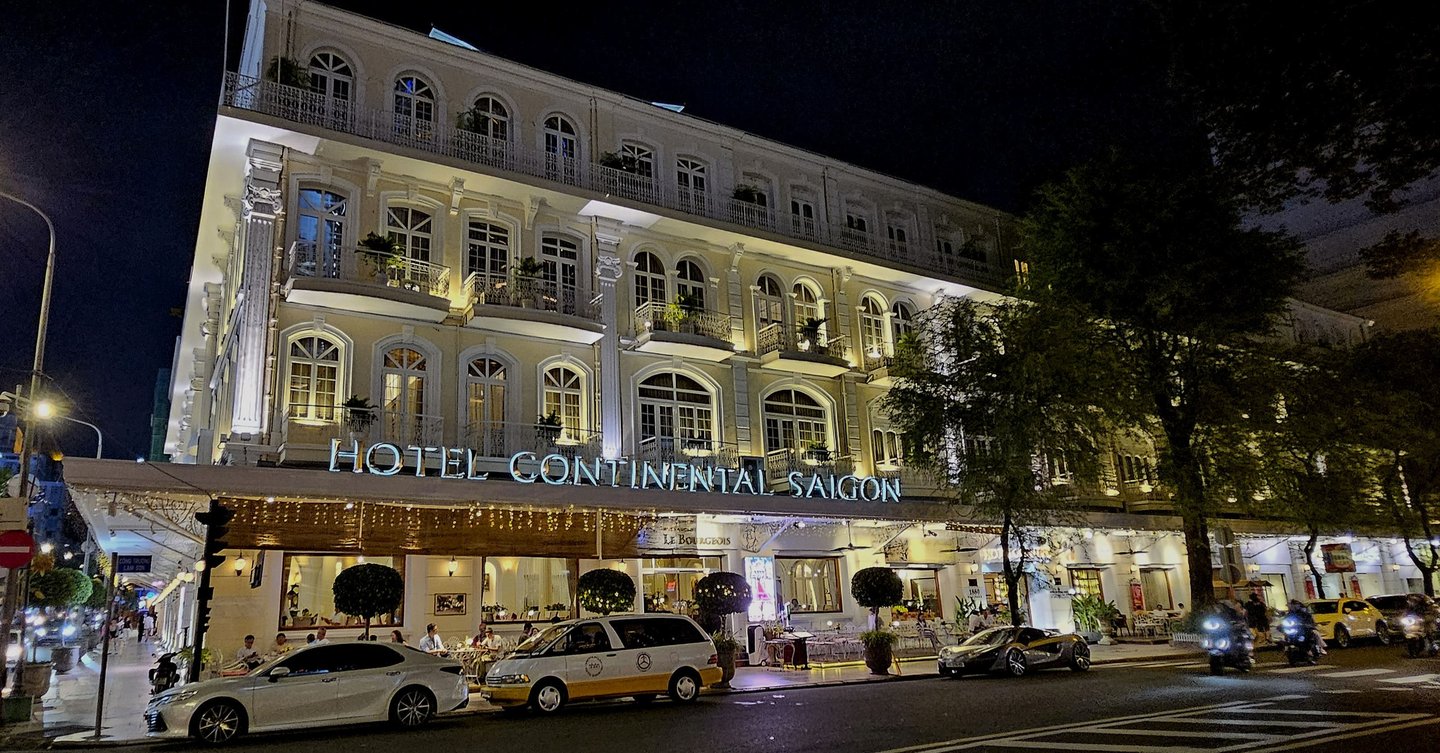

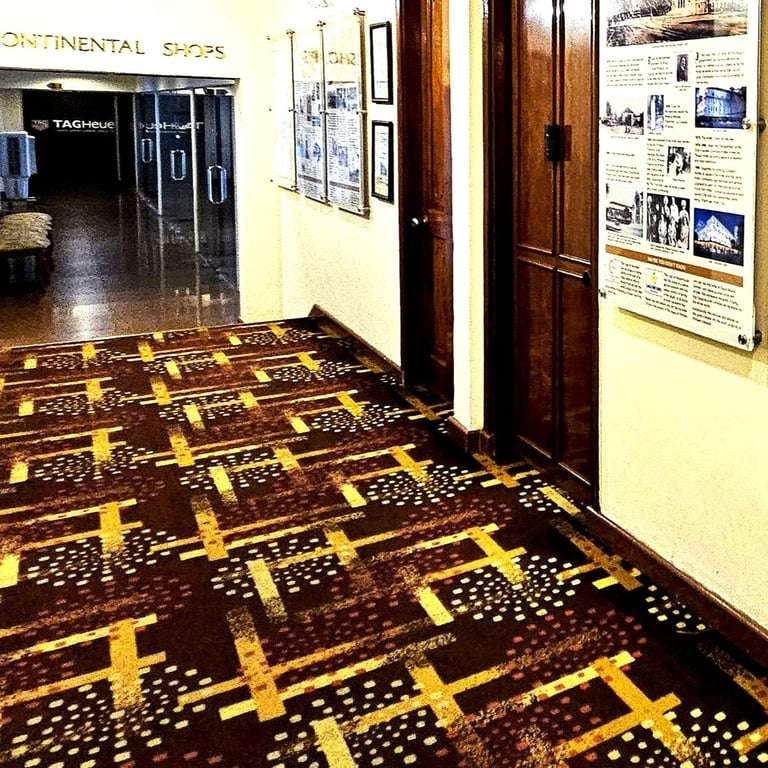
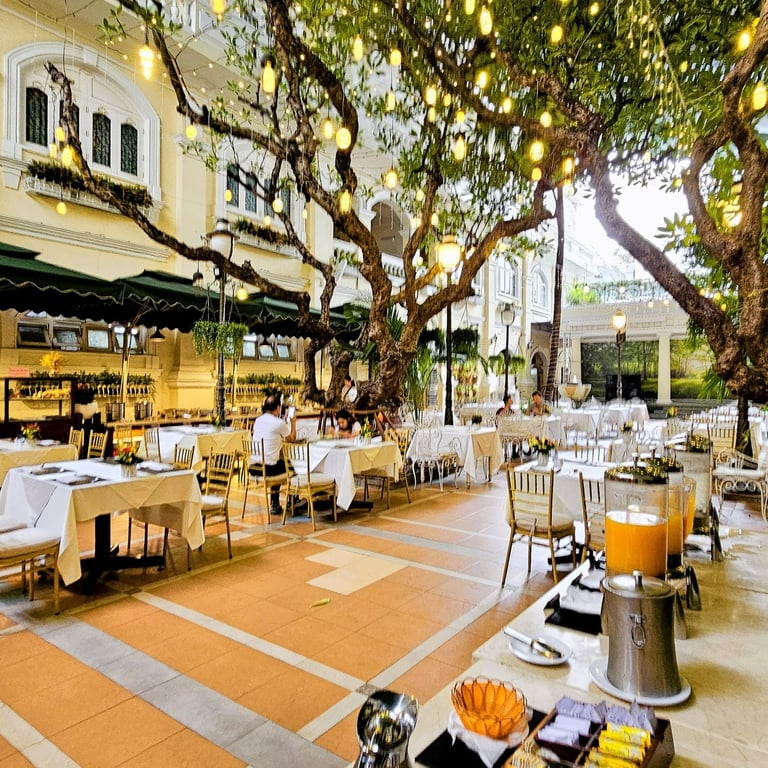
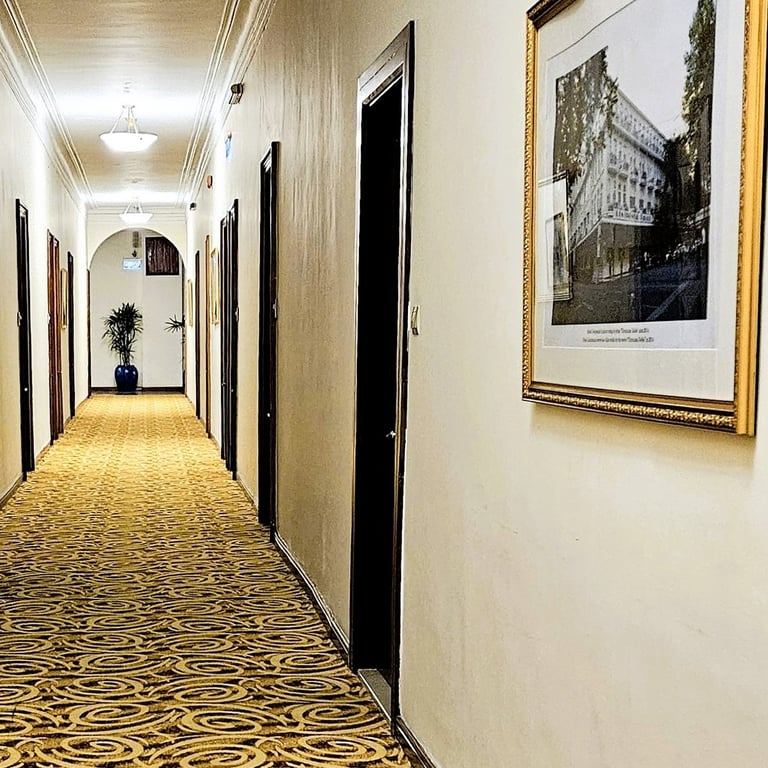
gia dinh special forces museum, saigon
Little Gem in D3
This little gem in District 3 is not the sort of place you will happen upon. You have to have read about it before setting out to nail down its location. In fact, its frontage looks identical to the shops either side of it, with seemingly no sure way to identify it, beyond the guy sitting outside watching me trying to cross the busy street. I obviously look the right age to be visiting, so was beckoned forward. Once inside via an old lift with a cage door, you are stepping into what looks like personal tableaux commemorating small contributions to the conflict. Small, but politically important at the time, no doubt.
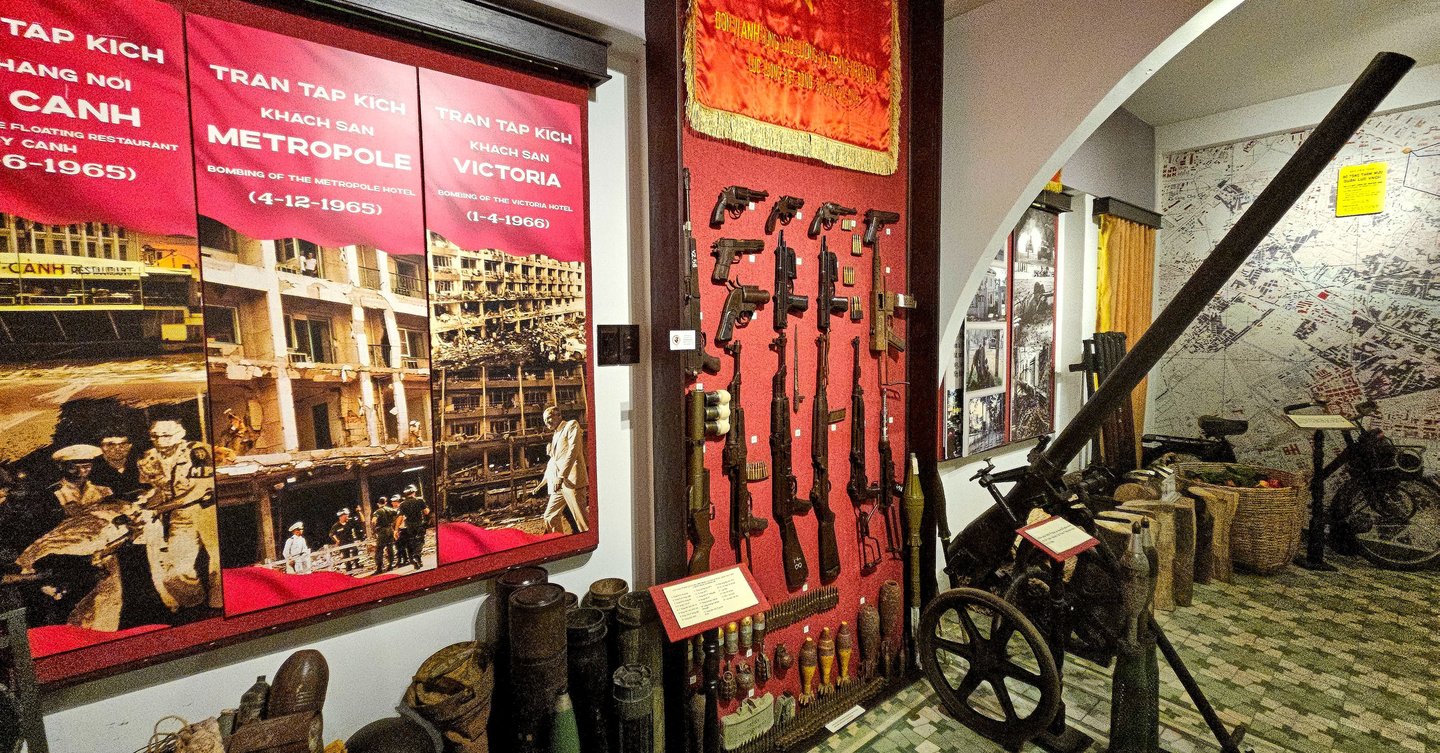

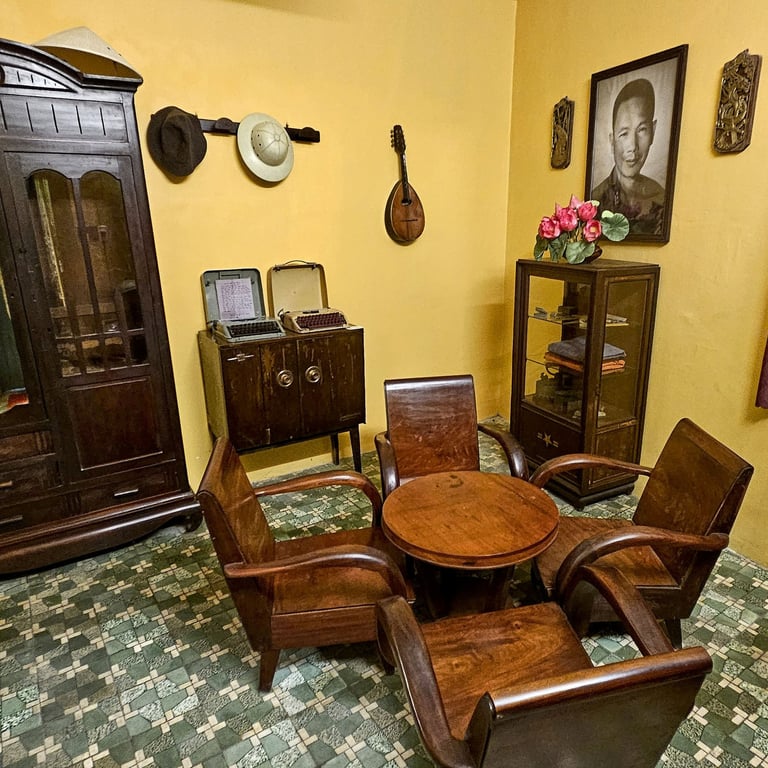

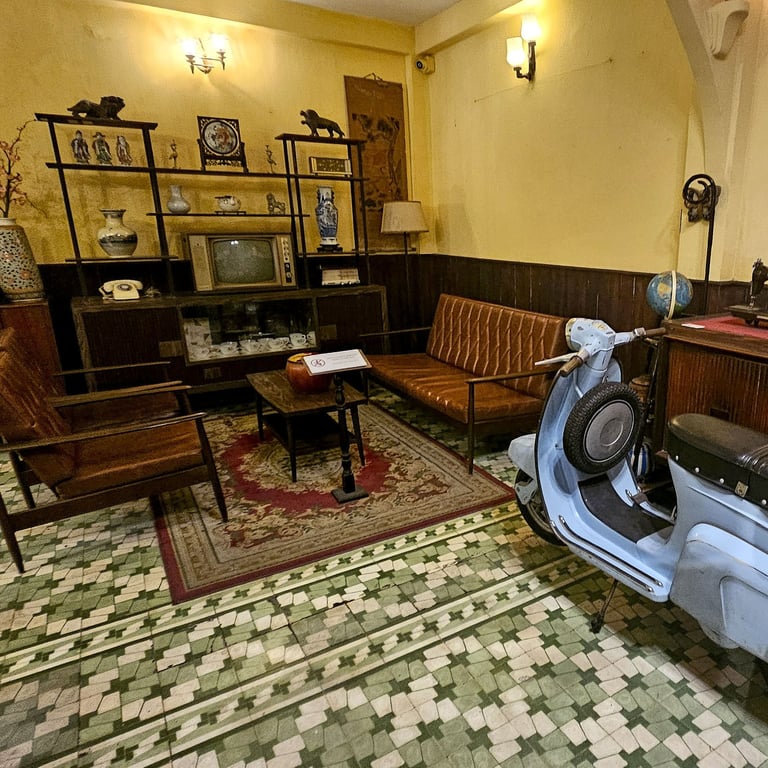
hoa lu, ninh binh province
Ancient capital
The first capital city of Vietnam was in what it is now Ninh Binh Province. Hoa Lu village became the seat of power when the Dinh Dynasty was established in 968. Dinh Bo Linh (known as Dinh Tien Hoang), having vanquished 12 warlords, then had to contend with the usual plots and intrigues which seem to follow royal succession everywhere. He ended up being assassinated: stabbed by a eunuch while sleeping – not how you want to go, really. Nowadays there is a 17th century temple built to honour him. It is in beautifully kept grounds, making for a tranquil visit. People go there to pray and seek favour and good fortune.
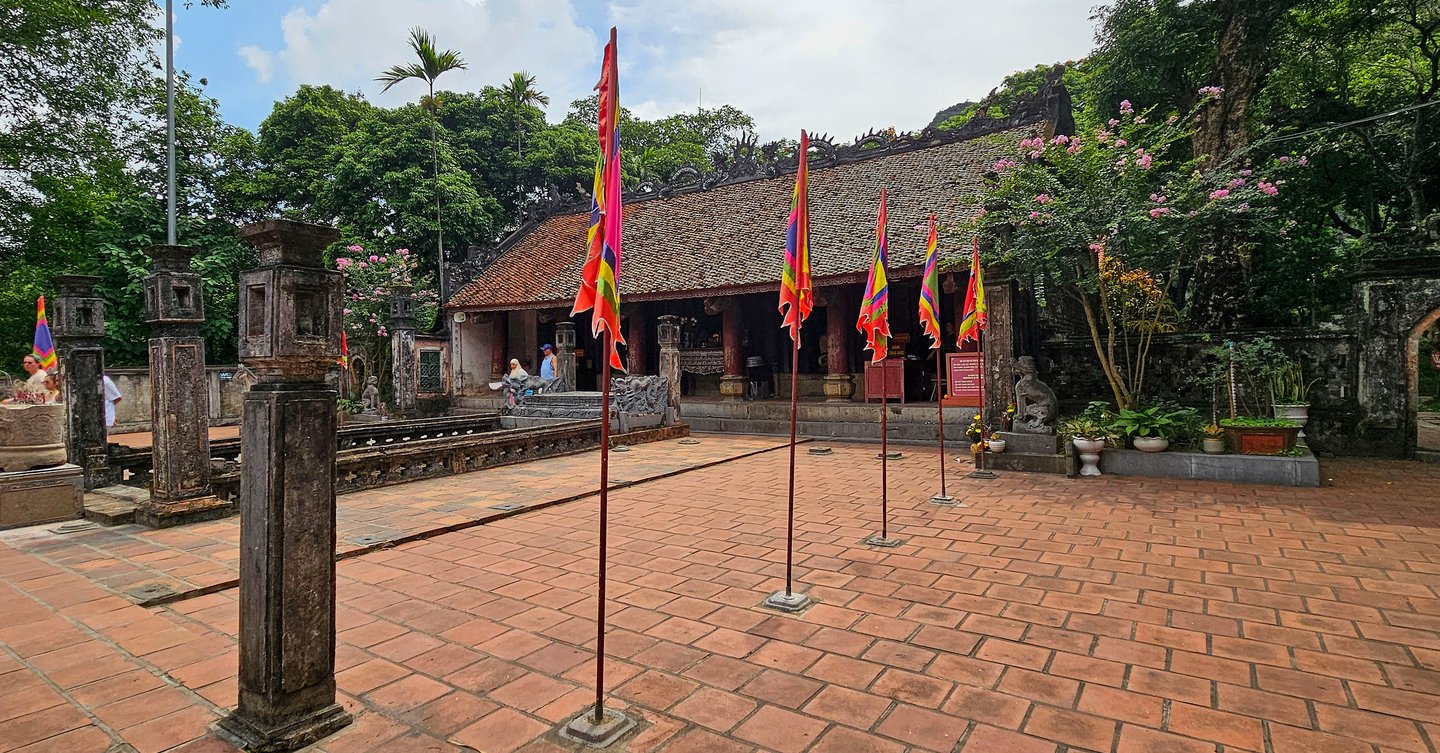

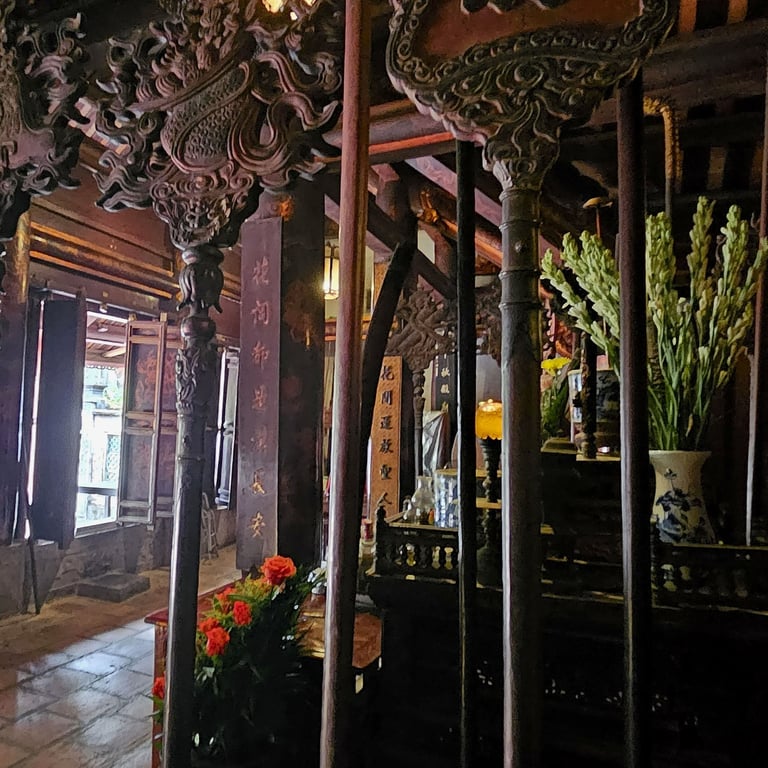
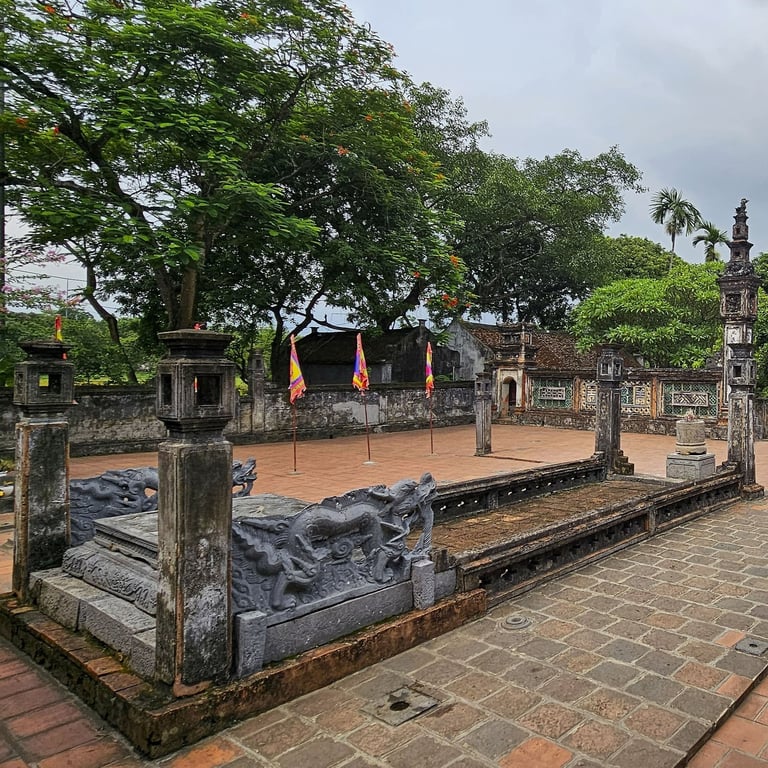
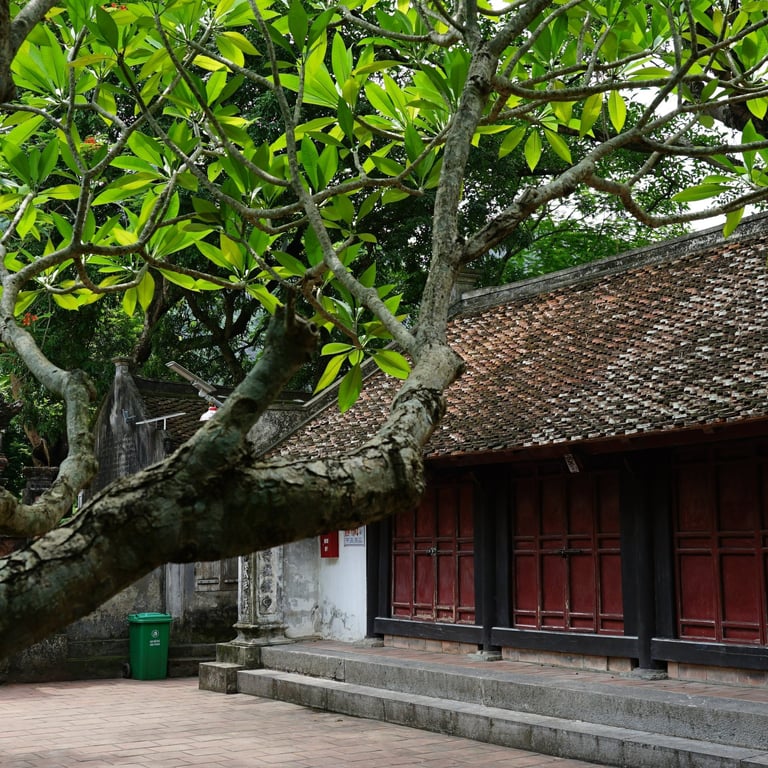
duong phu dinh, saigon
The Lover
The Lover, a novel by Marguerite Dumas and said to be autobiographical, recounts the tale of a scandalous affair between a young French schoolgirl and a rich Chinese businessman in 1930s Vietnam. The graphic 1992 film raised pulses and questions such as, “Did they, or didn’t they?” and hung heavily over the career of Jane March and to a lesser extent, Tony Leung. In olden days wealthy bachelors in Vietnam had their town pad to which they could retreat for intimate privacy. In the film, the bolthole was in Phu Dinh Street in Cholon, with a busy backdrop of market folk going about their day just outside the shuttered windows.

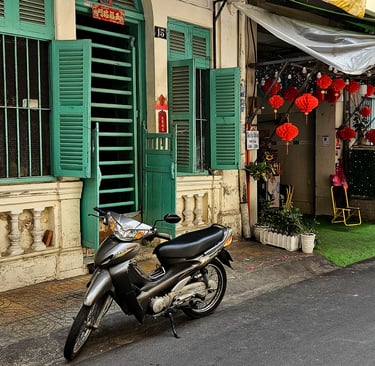
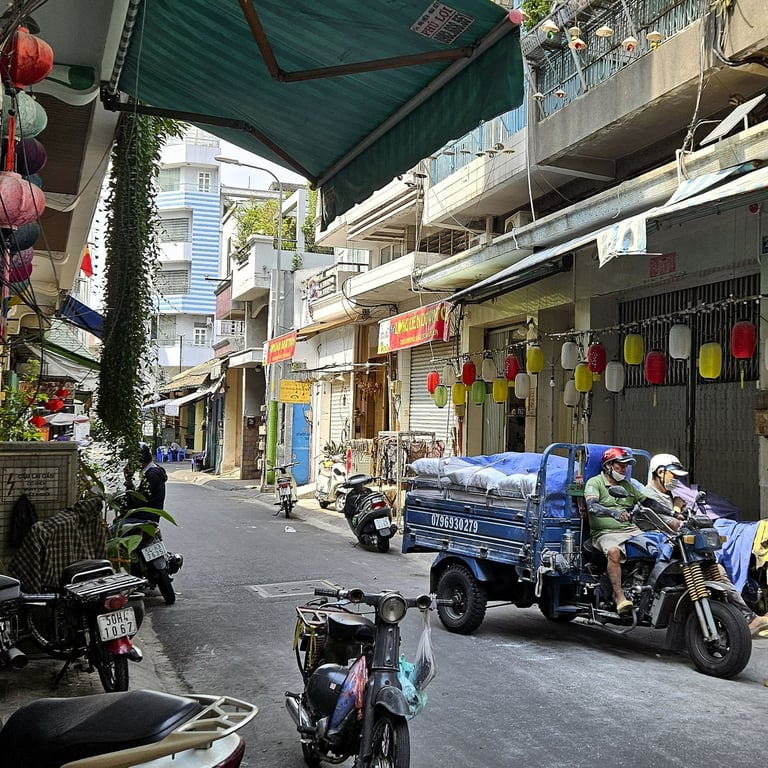
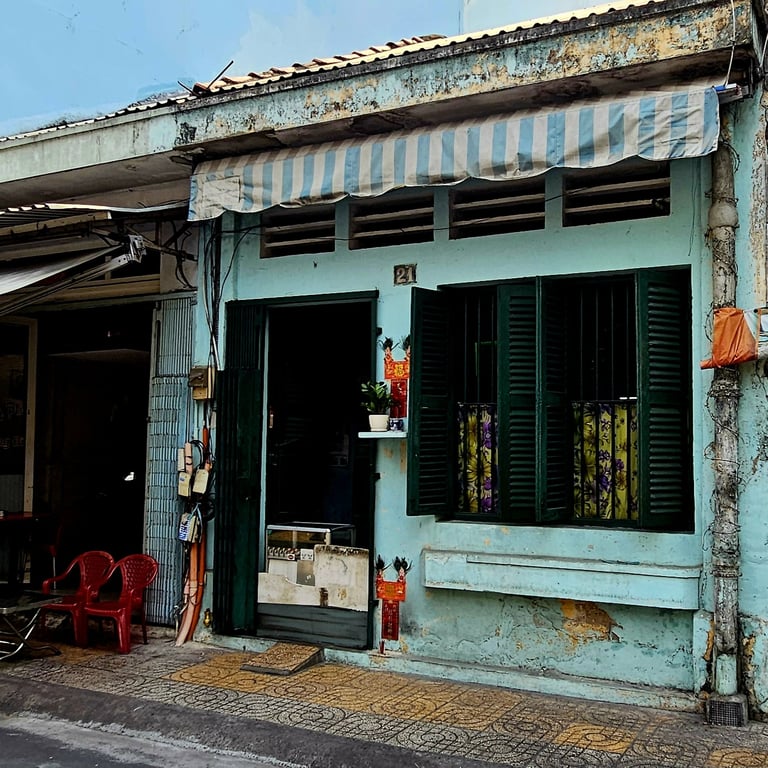
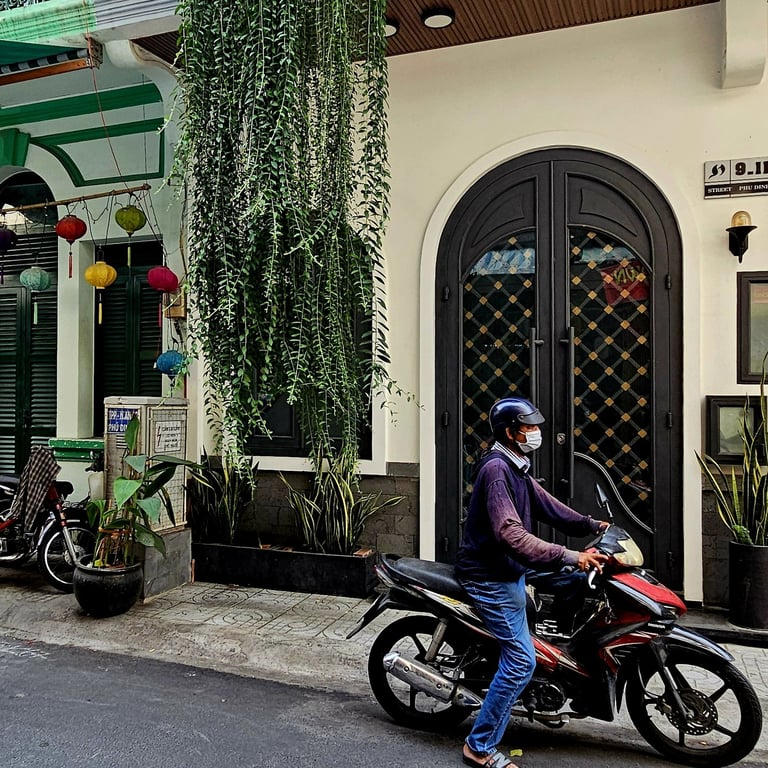
war remnants museum, saigon
The sorrow of war
When I first visited the museum in the 1990s it was all a bit tatty. And I do remember some complaints that it gave a rather gory view of the conflict, although I thought it was quite balanced, considering the history that it was commemorating. It has now been revamped, not just the buildings but also the quality of the displays. I was particularly drawn to the war photography and the permanent display curated by famed photojournalists, Tim Page and Horst Faas.

